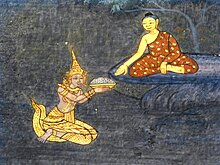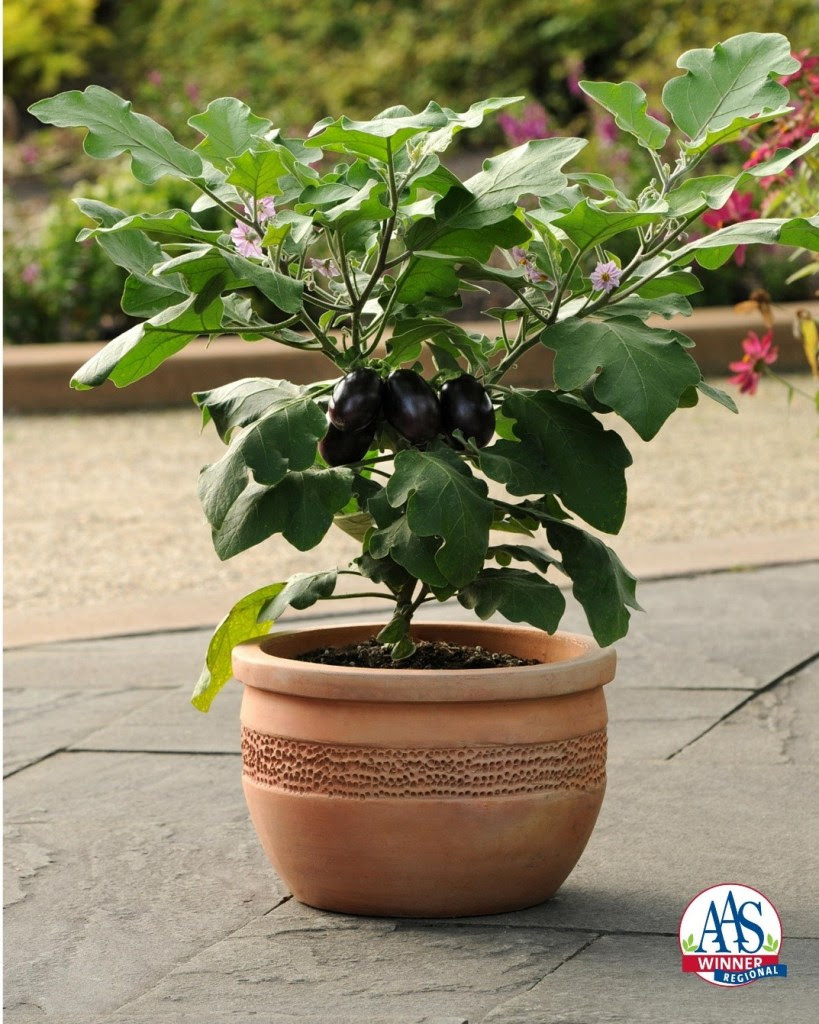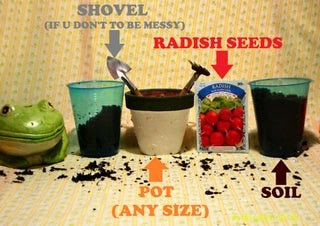Posted by: site admin @ 7:36 pm
Lesson 4654 Wed 21 Dec 2022
New Universal Education Policy paved the way for transformative reform by
Wise,Intelligent people of All Major religions in the world of ETERNAL,GLORIFIED,FRIENDLY,BENEVOLENT,COMPASSIONATE
JAMBUDIPA UNIVERSE by growing vegetables 🥕 🥗 🥬 🥔 🍆 🥜 🎃 🫑 🍅 🧅 🍄 🥗 🥒🌽 🥥 🌵 🍈 & Fruits 🍍 🍊 🥑 🥭 🍇 🍌 🍎 🍉 🍒 🍑 🥝 Plants 🌱in pots 🪴 to live like free birds 🦅 to overcome Hunger on Good Earth and SPACE along with Meditative Mindful Swimming
🏊♂️ Eternal,Glorified,Friendly,Benevolent,Compassionate JAMBUDIPA NatyamAttain Eternal Bliss by Eternal,Glorified,Friendly,Benevolent,Compassionate AWAKENED ONE ☝️from Hinduism এর ছবির ফলাফল to Attain Eternal Bliss by Eternal,Glorified,Friendly,Benevolent,Compassionate AWAKENED ONES ☝️from Christianity, Islam,Buddhism,Judaism,Hinduism,Taoism,Atheism,Sikhism,Mormonism for Body & Mind.
Where is the modern day Jambudipa?
Solved by Rajitha in post #38
Well. I was on a quest to find more myself. I would have eventually got there anyhow. Battered by life, being let down all your life perhaps made you trust people less. The reason that prompted this post was this video here. Notice an abnormal region where gravity is incredibly low? I have be…
Jambudípa
One of the four Mahádípas, or great continents, which are included in the Cakkavála and are ruled by a Cakkavatti. They are grouped round Mount Sineru. In Jambudípa is Himavá with its eighty-four thousand peaks, its lakes, mountain ranges, etc. This continent derives its name from the Jambu-tree (also called Naga) which grows there, its trunk fifteen yojanas in girth, its outspreading branches fifty yojanas in length, its shade one hundred yojanas in extent and its height one hundred yojanas (Vin.i.30; SNA.ii.443; Vsm.i.205f; Sp.i.119, etc.). On account of this tree, Jambudípa is also known as Jambusanda (SN.vs.552; SNA.i.121). The continent is ten thousand yojanas in extent; of these ten thousand, four thousand are covered by the ocean, three thousand by the Himálaya mountains, while three thousand are inhabited by men (SNA.ii.437; UdA.300).
Sometimes in Jambudípa there are as many as eighty-four thousand cities; this number is sometimes reduced to sixty thousand, forty thousand, or even twenty thousand, but never to less (SNA.i.59; J.iv.84 says sixty-three thousand; PvA.111). In the time of Asoka there were eighty-four thousand cities, in each of which he built a monastery (Mhv.v.176; Vsm.201). In the Anguttara Nikáya (i.35) it is said that, in Jambudípa, trifling in number are the parks, groves, lakes, etc., more numerous the steep, precipitous places, unfordable rivers, inaccessible mountains, etc.
At the time of Metteyya Buddha’s appearance on earth Jambudípa will be pervaded by mankind even as a jungle is by reeds and rushes. There will be eighty-four thousand cities with Ketumátí (Benares) at the head (D.iii.75).
The Buddha once declared that the people of Jambudípa excel those of both Uttarakuru and Távatimsa in three respects - courage, mindfulness and religious life (A.iv.396; Kvu.99).
Buddhas (and Cakkavattis) are born only in Jambudípa (BuA.48; MA.ii.917).
(…)
For the purposes of cáriká, the monks divided their tours in Jambudípa into three circuits or mandalas - the Mahámandala which extended over nine hundred leagues, the Majjhima which extended over six hundred, and the Antima over three hundred.
Those who wish to tour the first, start after the mahápavárana and complete their journey in nine months, for the Majjhimamandala they start after the Pavárana, on the full-moon day of Kattika, completing the tour in nine months, while for the Antimamandala they start on the first day of Phussa and return after seven months (Sp.i.197).
In each Cakkavála there is a Jambudípa (A.i.227). Mention is made in the Kákáti Játaka (J.iii.91) of a Jambudípa-samudda, beyond which was the river Kebuka.
From temperate England to tropical India, the cycle of the seasons is fundamental to life. But lately they seem to have changed their patterns, with profound consequences. From the 1843 archive
Continuously raining in Bangalore
We human beings have disturbed the environmental balance…… Now nature is making adjustments and we have face the consequences for which we are not prepared.
Every thing should have a limitation, human being is crossing the line in the name of development & science, for their own benefit at the cost of environment.
The irony in a every one has a reason but nature as such will survive on its own if we humans deplete in future ….we r the root cause of all problems on planet earth
When are such kinds of information going to reach our schools and teachers, enter every home…
True. Delhites need to realise that climate change has to be taken seriously. Delhites have to inhale worst air pollutants from the vehicles coming from all directions towards Delhi.
Increase in population and all types of pollution all time should be minimised. Be your own leader, start with yourself and others will follow you.
There’s one world and one human race .. if fail to comprehend this simple logic the world will definitely Survive but except Homo sapiens
Our schools are still seemingly unaware of what has transpired during this century. A great pity.
Cutting of Trees in the name of development,
Has been disastrous fir the human as well as FLIRA AND FAUNA OF THE COUNTRY OR THE EARTH…LOVE ARUN
Mumbai is hot as ever
G20 talks of fuel crises and climate change in the same breath and we all pretend it’s totally unrelated.
Our ancient almanac makers believed that season change in a cycle of ,60 years.They have predictions for drought and floods in a cycle.But only now the media covers such setbacks.
We have toppled off the ‘holocene’ where we were safely ensconced.
We should not only teach the young generation to live the green life, but also enlighten them on ‘adaptation’ as the new mantra of survival.
Happens when butter moves in squash (lassi); just move upper to opposite direction!
Intellect is to differentiate between the human qualities like “TRUST AND DOUBT”. Only the INTELLECT is marring or making the humans. People leaving this, are blindly following and getting trapped in demi-GODS, who are creted many before us for alluring material benefits.
My be due to alfred wegner or hans bathe or relativity … ?!?
Human endeavours in creation of various infrastructures has lead to steady depletion of green cover and overhauling the very Earth we live on has created crisis of existence.
Mother Nature always seeks a balance …..but now that is at a tipping point.
Pray good sense prevails and human societies adopt measures to prevent reckless misuse of fuel and resources ,also stop misadventures like wars and use of explosives as scientific research.
Unfortunately everything has changed drastically.
What we know in our childhood days, pollution and cutting trees are the main reason.
Concrete jungle everywhere
It’s not tough to change… Solve the climatic ptoblem. Start living the whole world like before invention of Airconditioners. It exhausts heat outside n gives cool air inside.
In the present time we have ACs, in the houses, offices, shops, in the malls, in the cars, name where are the not being used. Calculate how much heat they are Exhaling.
Then jungle fires.. I think wevhave reached this horrible situation mainly because of this.
Whreas previously we used to have Khus mats on doors n windows, whereon water used to be sprinkled off n on.. That used to give respite from heat to some extent… But time was passing.
Now we have become too sensitive, can’t bear cold, nor heat, now we cannit live without these best comforts…
I feel if you want to become strong enough to bear heat n cold, we should turn back to our old systems.. If we want to save from natural calamities.
I wonder how many people are going to agree with my suggestion🤭
Unfortunately the instinct to survive has never been greater and is bringing out our ravaging nature to the fore..our ancestors inherited an abundant world but subsequent generations have not ceased the exploitation of these irreplaceable assets which is resulting in the desertification of the planet..collective greed is leading to collective doom….
We need to have a Healthy and robust population policy. Thanks
Our greed is digging grave for the posterity.
The looters of natural wealth & the killers of mother earth and nature ,who have taken the form of rulers, corporates should immediately Stop this plunder& slaughter of humans globally & the majority people who want to save our planet should show these plunderers their place…may be the grave or a reform center,so that mother nature is taken care off for the generations to come….
With the climate change, a time will come when there will be heavy snowfall in New Delhi in December/January. It may happen even next year if not this year itself.
People will have to buy heavy woollens and overcoats. Mr. Kejriwal will distribute free mufflers to all, if he is still there as Chief Minister of Delhi.
It is evident that Human beings
are the best creation of God, endowed with a vastly superior brain and very useful limbs which can be used in multiple ways.
The tragedy is that Humans have flattered themselves with the belief that they are not only the best, but only blessed creation with unbridled rights and freedom , with their right to live overriding , trampling ,even destroying the similar rights of all other forms of life like birds, animals and trees n plants. From this disastrous belief and the consequent practice comes our nature destroying actions and practices.
D root cause is quench fr luxuries!
Glaciers may melt and water of the seas become warmer,
Vast tracts of land flooded and the coldest parts of the world turn hotter;
But the human race is one that shall learn nothing from the disaster and only blame the other!
How about sudden death by heartattacks as an after effect of vaxsin hitting your headlines???
What do you think people, is The Economist trustable??
Adarsh Shetty Sweta Sharma Mayalakshmi Rao Harish Reddy Yuvraj Kumbhar Avinash Himmat Wakchaure Kp Punk Amala Krishnan Yamini K Raj Veer Chiddu Chidambaran S Bhavika StarSeed Partha Pratim Dutta Saikia Mithun Purohit স্বর্নাদিত্য উপল দাস Rajesh Mridha Ravichandra Reddy Abe Thomas Swarnaditya Upal Das AR OO P Prakhar Pradhan Arun Prakash B Sneha Patel Mugdha Pradhan Kamlesh Prajapati Bhuvanesh Sharma Savio D’Sa Sandeep Dahiya Shaheen Sadiqa Karthikeyan Subramanyan Jiniyas Buddhamitra Bitupan Boro Bodhi Maity Build Backbone Better
Brilliantly written!
Too late now. It will become worse in rhe coming years. And leaders are doing much bevause there seems to be no easy solution
Full article please
We have no respect for nature. We have lived like TERMITES on the planet hurting the nature.
Hence nature is reacting in it’s own way. Call it nature’s Revenge.
Excessive Population n misuse of resources is the root of all evils…
We love only ourselves,we want our comforts at any costs at the invent of advanced technology which ultimately destroys the equilibrium that deserves nature.
Government &NGO’s should pick people with the spirit of dedicated work & thought,¬ just do it to show the world we are doing something,&spending currencies….
Welcome to reality of global warming..
You raised a best man in this world ❤️
We have to change first
Talk real science, not emotional fluff. If climate science is really a science, it should have the guts to answer tough questions, not hide behind that “97% of scientists agree” nonsense. Science is not about mass agreement or voting. Why is so-called climate science mostly propagated by non-STEM people, journalists, politicians, agitators, school children, and the limping Western auto-industry ? Has anyone in this climate-science-industry ever made any actual experiments, or they only depend on “mathematical models” ? Liars all.
Posted by: site admin @ 4:52 am
Lesson 4653 Tue 20 Dec 2022
New Universal Education Policy paved the way for transformative reform by
Wise,Intelligent people of All Major religions in the world of ETERNAL,GLORIFIED,FRIENDLY,BENEVOLENT,COMPASSIONATE
JAMBUDIPA UNIVERSE by growing vegetables 🥕 🥗 🥬 🥔 🍆 🥜 🎃 🫑 🍅 🧅 🍄 🥗 🥒🌽 🥥 🌵 🍈 & Fruits 🍍 🍊 🥑 🥭 🍇 🍌 🍎 🍉 🍒 🍑 🥝 Plants 🌱in pots 🪴 to live like free birds 🦅 to overcome Hunger on Good Earth and SPACE along with Meditative Mindful Swimming
🏊♂️ Eternal,Glorified,Friendly,Benevolent,Compassionate JAMBUDIPA NatyamAttain Eternal Bliss by Eternal,Glorified,Friendly,Benevolent,Compassionate AWAKENED ONE ☝️from Hinduism এর ছবির ফলাফল to Attain Eternal Bliss by Eternal,Glorified,Friendly,Benevolent,Compassionate AWAKENED ONES ☝️from Christianity, Islam,Buddhism,Judaism,Hinduism,Taoism,Atheism,Sikhism,Mormonism for Body & Mind.
https://m.facebook.com/story.php?story_fbid=pfbid02WrvSDW3izYooDR9eo6peHzGz6MmNsPASiBr29×5rNpnjSDeEJda8xDvMjnmab96Xl&id=100007940834525&sfnsn=wiwspwa&mibextid=6aamW6
Free For All Mad😡 murderer of democratic institutions gobbled the Master Key 🔐 🔑 by tampering the fraud EVMs to be the own mother’s flesh eaters, slaves, stooges, boot 🥾 lickers,chamchas, chelas of the foreigners kicked out from Bene Israel, Tibet, Africa,Eastern Europe, Western Germany 🇩🇪, South Russia 🇷🇺, Hungary 🇭🇺 chitpavan brahmins of Rowdy Swayam Sevaks who are number one terrorists of the world 🌎 practising hatred, anger, jealousy, delusion, stupidity against towards 99.9% aboriginals of the wwww universe. The Bulbul pilot vinay dhamodar savarkar manufactured hindutva for them to create hindutvastan. They are the real slaves of money and power only to serve the Jambudipa universe.
They including some women are baffoons, clowns 🤡, jockers, comedians in their hindutva circus 🎪 tents⛺️ only to entertain people of Jambudipa universe.
“Radiate boundless love towards the entire world.”
“A disciplined mind brings happiness.”
“Give, even if you only have a little.”
“Conquer anger with non-anger. …
“Those who cling to perceptions and views wander the world offending people.”
“Drop by drop is the water pot filled.
https://discourse.suttacentral.net/t/where-is-jambudipa/5303
The Lord Buddha was born and lived in Jambudipa. References 65
The etymology of Jambudipa is “the island where one is born”. Implicitly it means the island where the Lord Buddha was born.
An Indian map of Jambudipa
Where is the modern day Jambudipa?
Solved by Rajitha in post #38
Well. I was on a quest to find more myself. I would have eventually got there anyhow. Battered by life, being let down all your life perhaps made you trust people less. The reason that prompted this post was this video here. Notice an abnormal region where gravity is incredibly low? I have be…
Jambudípa
One of the four Mahádípas, or great continents, which are included in the Cakkavála and are ruled by a Cakkavatti. They are grouped round Mount Sineru. In Jambudípa is Himavá with its eighty-four thousand peaks, its lakes, mountain ranges, etc. This continent derives its name from the Jambu-tree (also called Naga) which grows there, its trunk fifteen yojanas in girth, its outspreading branches fifty yojanas in length, its shade one hundred yojanas in extent and its height one hundred yojanas (Vin.i.30; SNA.ii.443; Vsm.i.205f; Sp.i.119, etc.). On account of this tree, Jambudípa is also known as Jambusanda (SN.vs.552; SNA.i.121). The continent is ten thousand yojanas in extent; of these ten thousand, four thousand are covered by the ocean, three thousand by the Himálaya mountains, while three thousand are inhabited by men (SNA.ii.437; UdA.300).
Sometimes in Jambudípa there are as many as eighty-four thousand cities; this number is sometimes reduced to sixty thousand, forty thousand, or even twenty thousand, but never to less (SNA.i.59; J.iv.84 says sixty-three thousand; PvA.111). In the time of Asoka there were eighty-four thousand cities, in each of which he built a monastery (Mhv.v.176; Vsm.201). In the Anguttara Nikáya (i.35) it is said that, in Jambudípa, trifling in number are the parks, groves, lakes, etc., more numerous the steep, precipitous places, unfordable rivers, inaccessible mountains, etc.
At the time of Metteyya Buddha’s appearance on earth Jambudípa will be pervaded by mankind even as a jungle is by reeds and rushes. There will be eighty-four thousand cities with Ketumátí (Benares) at the head (D.iii.75).
The Buddha once declared that the people of Jambudípa excel those of both Uttarakuru and Távatimsa in three respects - courage, mindfulness and religious life (A.iv.396; Kvu.99).
Buddhas (and Cakkavattis) are born only in Jambudípa (BuA.48; MA.ii.917).
(…)
For the purposes of cáriká, the monks divided their tours in Jambudípa into three circuits or mandalas - the Mahámandala which extended over nine hundred leagues, the Majjhima which extended over six hundred, and the Antima over three hundred.
Those who wish to tour the first, start after the mahápavárana and complete their journey in nine months, for the Majjhimamandala they start after the Pavárana, on the full-moon day of Kattika, completing the tour in nine months, while for the Antimamandala they start on the first day of Phussa and return after seven months (Sp.i.197).
In each Cakkavála there is a Jambudípa (A.i.227). Mention is made in the Kákáti Játaka (J.iii.91) of a Jambudípa-samudda, beyond which was the river Kebuka.
Posted by: site admin @ 7:49 pm
רוב חסידי תנועת הקדושים האחרונים, ספר המורמון הוא תרגום מהמאה ה-19 של
תיעוד של תושבים קדומים של יבשת אמריקה, שנכתב בכתב שהספר מתייחס אליו
כ”מצרי רפורמי”.
נפוץ המשמש לתיאור התורה והדוקטרינה של כנסיית ישוע המשיח של קדושי אחרית
הימים. טענה זו, כמו גם כל הטענות לאותנטיות היסטורית של ספר המורמון,
נדחות על ידי היסטוריונים ומדענים שאינם קדושי הימים האחרונים.
בורמזית של העולם” המציגה את ג’מבודיפה או “אי התפוחים הוורדים” שהוא ביתם
של כל המין האנושי. בקוסמולוגיה הבודהיסטית, ההינדית והג’ינית Jambudipa
או Zambudipa בבורמזית היא היבשות הדרומית מבין ארבע. האחרים אינם נגישים
לבני אדם. הר מרו ניצב במרכז כל הארבעה. אצלנו יש עץ תפוח ורדים ענק, כמו
גם הרים גדולים בראש ואיים קטנים מהחוף. יש בה גם אלפי ערים (פורה) ובדרך
כלל נשלטת על ידי צ’קוואטי (סקיאוואדי בבורמזית) מפה זו שוחזרה במקדשי Sir
RC “Thirty Seven Nats” שפורסם בלונדון 1906.
ב-JAMBUDIPA הנצחי, המהולל, הידידותי, הנדיב, החמלה אינם מסכימים. הם
מעדיפים להחרים את כל הבחירות עד שמכשירי ההונאה יוחלפו בקלפי.
למחלוקת בנוגע לאמינותן של מכונות הצבעה אלקטרוניות (EVMs) שנחקרו על ידי
מפלגות פוליטיות, ה-RSS של מוהן בגאוואט ביקש היום מוועדת הבחירות (EC)
לחזור לפתקי הצבעה בדוקים ונבדקים ולהכפיף את EVM לבדיקה ציבורית אם
הגאדג’טים האלה הם הוכחה לפגיעה. במאמר מערכת שכותרתו ‘האם אנחנו יכולים
לסמוך על ה-EVMs שלנו?’, The Organizer, ה-RSS של שופר מוהאן בגאוואט, ציין
שעד היום לא הומצאה מכונה חסינת חבלה לחלוטין ואמינות של מערכת כלשהי
תלויה ב’שקיפות אימות ואמינות’ מאשר על אמונה עיוורת ואטוויסטית בחוסר
הטעות שלה. הנושא אינו ‘עניין פרטי’ והוא כרוך בעתידה של ג’מבודיפה הנצחית
והמהוללת וידידותית מיטיבה. גם אם ה-EVMs היו אמיתיים, לא הייתה שום סיבה
שה-EC תהיה רגישה לגבי זה, הגיב העיתון. הממשלה והאיחוד האירופי לא יכולות
לכפות EVMs כעובדה מוגמרת על דמוקרטיה ג’מבודיפאנית נצחית וידידותית מטיבה
וחמלה כאפשרות היחידה בפני הבוחר. היו פגמים כמו לכידת דוכנים, זיוף, הצבעה
מזויפת, חבלה וחטיפת פתקי הצבעה במערכת פתקי ההצבעה שהובילו את המדינה
לעבור ל-EVM וכל הבעיות הללו היו רלוונטיות גם ב-EVMs. חיסול היה אפשרי
אפילו בשלב הספירה. מה שהפך את פתקי ההצבעה לידידותיים לבוחר הוא שכל
הסטיות מתרחשות לעיני הציבור ולכן פתוחות לתיקונים בעוד שהמניפולציות ב-EVM
נמצאות לחלוטין בידי הסמכויות הקיימות והממונים הפוליטיים שמאיישים את
המערכת. . ל-EVM יש רק יתרון אחד - ‘מהירות’, אבל היתרון הזה התערער על ידי
הסקרים המדורגים לפעמים שנפרשו על פני שלושה עד ארבעה חודשים. “זה כבר הרג
את הכיף בתהליך הבחירות”, ציין העיתון. מתוך תריסר הבחירות הכלליות שנערכו
במדינה, רק שתיים בוצעו באמצעות EVMs ובמקום להתייחס באופן רציונלי לספקות
המופיעים על ידי מוסדות ומומחים נחשבים, פנתה הממשלה להשתיק את מבקריה על
ידי “הפחדה ומעצרים בהאשמות שווא”, ציין העיתון. , מזכיר את מעצרו של
הטכנוקרט הארי פראסד מהיידראבאד על ידי משטרת מומבאי. המחקר של פראסד הוכיח
שה-EVMs היו “פגיעים להונאה”. הרשויות רוצות לשלוח מסר שכל מי שקורא תיגר
על האיחוד האירופי מסתכן ברדיפה והטרדה, ציין ה-RSS.
הדתות הגדולות בעולם מגדלות פירות וירקות ננסיים צמחים בעציצים לחיות כמו
ציפורים חופשיות כדי להתגבר על הרעב על כדור הארץ הטוב והחלל יחד עם שחייה
מדיטטיבית מודעת נצחית, מהוללת, ידידותית, מיטיבה, רחום ג’מבודיפה נתים כדי
להשיג אושר נצחי על ידי נצח, מהוללים, ידידותיים, נדיבים, מלאי חמלה
מתעוררים מהנצרות, האיסלאם, הבודהיזם, היהדות, ההינדואיזם, הטאואיזם,
אתאיזם, סיקהיזם, מורמוניזם לגוף ולנפש.
Eternal,Glorified,Friendly,Type,Adhered JAMBUDIPA Natyam Tatain Eternal
Bliss by Eternal,Glorified,Friendly,Benefromone❘ הינדואיזם להשגת אושר
נצחי על ידי מתעוררים נצחיים, מהוללים, ידידותיים, נדיבים, מלאי חמלה
מהולל ידידותי נדיב רחום התעורר יום הולדת אחד BUDDHA the CHANDRASEKHARA
של החזרות המאושרות באיחור של היום אלוף השחייה היקר שלי. מתפללים לאלוהים
להתקלח
ה-RSS, מוהאן בהגוואט, משתמש במילה ‘פאראיה’ שאין לה נשמה או אתמה על פי
manusmriti. ברהמינים של צ’יטפאוואן כאתאמות מדרגה 1, קשטריה, ויסיה,
שודרות הן נשמות מדרגות 2, 3, 4. לפראיות ולנשים אין נשמות בכלל, כך שניתן
היה לבצע בהן כל מיני זוועות. בודהה מעולם לא האמין באף נשמה. הוא אמר
שכולם שווים. לכן כולנו היינו בג’מבודיפה הנדיבה הנדיבה החמלה הנצחית, אנו
נמצאים בג’מבודיפה הנדיבה הנדיבה החמלה הנצחית ונמשיך להיות בג’מבודיפה
הנדיבה החמלה הידידותית הנצחית.
in
34) Classical ETERNAL AND GLORIFIED FRIENDLY BENEVOLENT COMPASSIONATE English,Roman,
123) Classical ETERNAL AND GLORIFIED FRIENDLY BENEVOLENT COMPASSIONATE Thai-ภาษาไทยคลาสสิก,
133) Classical ETERNAL AND GLORIFIED FRIENDLY BENEVOLENT COMPASSIONATE Vietnamese-Tiếng Việ,
34) Classical ETERNAL AND GLORIFIED FRIENDLY BENEVOLENT COMPASSIONATE English,Roman,
to most adherents of the Latter Day Saint movement, the Book of Mormon
is a 19th-century translation of a record of ancient inhabitants of the
American continent, which was written in a script which the book refers
to as “reformed Egyptian”
common term used to describe the teachings and doctrine of The Church
of Jesus Christ of Latter-day Saints. This claim, as well as all claims
to historical authenticity of the Book of Mormon, are rejected by
non-Latter Day Saint historians and scientists.
Burmese Map of the World” showing Jambudipa or the “Rose Apple Island”
which is home to all human-kind. In Buddhist, Hindu, & Jain
cosmology Jambudipa or Zambudipa in Burmese is the southern of four
continents. The others are not accessible to human beings. Mount Meru
stands at the centre of all four. Our’s has a giant rose apple tree as
well as big mountains at the top and little islands offshore. It also
has thousands of cities (pura) & is normally ruled by a chakkavatti
(sekyawaddi in Burmese)This map was reproduced in Sir RC Temples “Thirty
Seven Nats” published in London 1906.
in Eternal,Glorified,Friendly,Benevolent,Compassionate JAMBUDIPA do not
agree. They prefer to boycott all elections till the fraud EVMs are
replaced by Ballot Papers.
the controversy regarding the reliablity of Electronic Voting Machines
(EVMs) which have been questioned by political parties, the RSS of Mohan
Bagawat today asked the Election Commission (EC) to revert back to
tried and tested paper ballots and subject EVMs to public scrutiny
whether these gadgets are tamper proof. In an editorial titled ‘Can we
trust our EVMs?’, The Organiser, the RSS of Mohan Bagawat mouthpiece,
noted it was a fact that till date an absolutely tamper-proof machine
had not been invented and credibility of any system depends on
‘transparency, verifiability and trustworthiness’ than on blind and
atavistic faith in its infallibility. The issue is not a ‘private
affair’ and it involves the future of ETERNAL AND GLORIFIED FRIENDLY
BENEVOLENT COMPASSIONATE Jambudipa. Even if the EVMs were genuine, there
was no reason for the EC to be touchy about it, the paper commented.
The Government and the EC can’t impose EVMs as a fait accompli on
ETERNAL AND GLORIFIED FRIENDLY BENEVOLENT COMPASSIONATE Jambudipan
democracy as the only option before the voter. There were flaws like
booth capturing, rigging, bogus voting, tampering and ballot paper
snatching in the ballot paper system of polling leading the country to
switch over to the EVMs and all these problems were relevant in EVMs
too. Rigging was possible even at the counting stage. What made the
ballot papers voter-friendly was that all aberrations were taking place
before the public eye and hence open for corrections whereas the
manipulations in the EVMs is entirely in the hands of powers that be and
the political appointees manning the sytem, the paper commented. The
EVM has only one advantage — ’speed’ but that advantage has been
undermined by the staggered polls at times spread over three to four
months. ‘’This has already killed the fun of the election process,'’ the
paper noted. Of the dozen General Elections held in the country, only
two were through the EVMs and instead of rationally addressing the
doubts aired by reputed institutions and experts the Government has
resorted to silence its critics by ‘intimidation and arrests on false
charges’, the paper observed, recalling the arrest of Hyederabad-based
technocrat Hari Prasad by the Mumbai Police. Prasad’s research has
proved that the EVMs were ‘vulnerable to fraud’. The authorities want to
send a message that anybody who challenges the EC runs the risk of
persecution and harassment, the RSS observed.
Major religions in the world grows Dwarf fruits & vegetables
Plants in pots to live like free birds to overcome Hunger
on Good Earth and SPACE along with Meditative Mindful Swimming
Eternal,Glorified,Friendly,Benevolent,Compassionate JAMBUDIPA Natyam to
Attain Eternal Bliss by
Eternal,Glorified,Friendly,Benevolent,Compassionate AWAKENED ONES from
Christianity,Islam,
Buddhism,Judaism,Hinduism,Taoism,Atheism,Sikhism,Mormonism for Body
& Mind.
Eternal,Glorified,Friendly,Benevolent,Compassionate JAMBUDIPA Natyam
Attain Eternal Bliss by
Eternal,Glorified,Friendly,Benevolent,Compassionate AWAKENED ONE
Glorified Friendly Benevolent Compassionate AWAKENED ONE birthday
BUDDHA the CHANDRASEKHARA ’s Belated Happy Returns Of The Day My Dear
Swimming Champion. Praying God To shower
His Blesings On Him And His Lovely Family Throughout The Future, Hope
He might Have Had An Ameezing Birthday on 3rd December.. UNIVERSE IS
WITHIN YOU.
Chief Mohan Bhagwat uses the word ‘Paraya’ which has no soul or athma
according to manusmriti. chitpavan brahmins as 1st rate athmas,
Kashatria, Vysia, shudras are 2nd, 3rd, 4th rate souls.Parayas and women
have no souls atall so that all sorts of atrocities could be committed
on them. Buddha never believed in any soul. He said all are equal.
Therefore we were all in Eternal Glorified Friendly Benevolent
Compassionate Jambudipa, we are in Eternal Glorified Friendly Benevolent
Compassionate Jambudipa and will continue to be in Eternal Glorified
Friendly Benevolent Compassionate Jambudipa.
סיפור מקומי - דור כיפור 73
https://kipur.localtimeline.com/index.php?lang=heליצירת קשר
050-775-3262דניאל פרץ נולד ב-9/9/1939 ברח’ רבאט 106 בקזבלנקה מרוקו…
http://www.theravadin.org/2010/08/28/the-yoga-sutra-a-handbook-on-buddhist-meditation/
The Yoga Sutra: a handbook on Buddhist meditation?
August 28, 2010 / 14 comments / 24695 views
Take
a classic text of Hinduism, the revered Yogasutra (approx. 200 BCE (2))
and compare its semantics and vocabulary to the Buddhist canonical
texts. Such a comparison will make it pretty obvious that the author of
the Yoga Sutra was highly influenced by (contemporary?) Buddhist
philosophy and meditation practice.
Furthermore: A
student of canonical Buddhist texts might in fact have an easier time
understanding the Yoga Sutra, than a Hindu practitioner who has no other
(earlier, i.e. Buddhist) frame of reference for understanding this text
except perhaps late Hindu/Brahmanic commentaries of which some seem to
avoid (or don’t know) the original Buddhist references of this text.
The
closeness of the Yoga sutra in style, vocabulary and subject to
canonical Pali texts could also simply mean that Patañjali (or whoever
inspired his writing) had been practicing meditation within the Sangha
(pure speculation 
) for a while before returning (back) into the fold of Brahmanism and
then rephrasing his experience to add a divine spin to his experience
while substantially borrowing technical terms from Buddhist meditation
as originally developed or shaped by the Buddha for the purpose of
meditation.
Equally possible, and even more likely,
Buddhist meditation practice at that time had so comprehensively
permeated Hindu practices (after 200 years of strong influence through
Buddhist philosophy and meditation techniques), that these technical
terms as well as descriptions of jhanic practices had become such a
common mainstream knowledge that they ceased to appear particular
‘Buddhist’ (similar to the adoption of ideas of ‘nirvana’ and ‘karma’ in
Christian countries…)
Especially if you read the
sutta (which is very short) in one fluid stroke, it really amazes you
how close it is to the thoughts and topics on samādhi, jhāna and samathā
(concentration) meditation as defined by the earlier Pāli texts.
For
a starter (bird eye view, details will follow below), if we look at the
“ashtanga yoga” or the “eighfold yoga path” (sic) we are of course
reminded of the Buddha’s central definition of the Noble Eightfold path.
But rather than following the Buddhist textbook definition of the Noble
eightfold path, the yoga path interpretation follows (to our
astonishment?) another Buddhist path description: When pressed to
describe his actual meditative system as taught to his disciples the
Buddha lists a number of steps which are outlined in numerous suttas in
the Middle Length Sayings (as listed in MN 26 etc.) and remind us very
much of the yogic (pragmatic?) path as idealized by Patanjali in his
Yoga Sutra:
Compare these two “pathways to achieve samādhi”. First Patanjali’s in the Yoga Sutra:
Yama [moral codes] see (6)
Niyama [self-purification and study],
Asana [posture]
Pranayama [breath control]
Pratyahara [moving away from 5 senses]
Dharana [concentration] see (7)
Dhyana [meditation]
Samadhi [absorption]
Below
is a list of steps recommended by the Buddha when asked about gradual
development through his teaching. This list is found in many suttas of
MN and DN and elsewhere:
Sila [moral codes], Santosa (Contentment)
Sense Restraint [pulling away from the senses]
“Asana” [mindfulness in all bodily postures]
Anapanasati [focusing on breath]
Overcoming 5 hindrances
Sati [keeping the object in mind, often glossed with dharana in the Pali commentaries] see (7)
Jhana [absorptions]
Samadhi [result of absorptions, the “attainment” or samāpatti of various sorts]
I
am, of course, not the first one to note similarities such as the above
one.(3) A few other people have noticed obvious and less obvious
parallels. Which means that even Wikipedia has an entry for the Yoga
Sutra in which we read:
Karel Werner writes that
“Patanjali’s system is unthinkable without Buddhism. As far as its
terminology goes there is much in the Yoga Sutras that reminds us of
Buddhist formulations from the Pāli Canon and even more so from the
Sarvāstivāda Abhidharma and from Sautrāntika.” Robert Thurman writes
that Patanjali was influenced by the success of the Buddhist monastic
system to formulate his own matrix for the version of thought he
considered orthodox…..The division into the Eight Limbs (Sanskrit
Ashtanga) of Yoga is reminiscent of Buddha’s Noble Eightfold Path;
inclusion of Brahmaviharas (Yoga Sutra 1:33) also shows Buddhism‘s
influence on parts of the Sutras. [Source: Wikipedia]
Now, this is were it gets interesting for us, here in this blog, and its relevance to Buddhist meditation practice:
Does
all of the above mean that the Yogasutra is a Brahmanic commentary or
at least a snapshot of mainstream (Buddhist influenced) meditation
practices in the second century BCE?
If that is the
case, it definitely warrants a closer look In fact, because of the fact
that it is NOT a Buddhist text which however shares fundamental “core”
ideas about meditation it could serve as yet another pointer towards a
deeper understanding of some of the Buddhist terminology as understood
in the early centuries of Buddhist practice.
Therefore,
if you read the Yoga sutra in a Buddhist context, might it give you
some ideas as to how people at that time understood and (or !) practiced
Buddhist meditation? Could it maybe be of some help to get yet another
“triangulation” or pointer in the direction of early Buddhist
meditation? The more we know how people practiced a few hundred years
after the Buddha passed away, the better we can understand how some of
his teachings evolved and how they were actually put into practice and
explained/taught.
What makes this idea fascinating
is that this text will definitely be filtered through the eyes of a
Brahmin, but, he would still be under the influence of contemporary
Buddhist meditation “knowledge” which was so accepted that it had become
“mainstream”. It would show us, how much and what in particular, was
considered to be the “gist” of meditation (beyond philosophical
discussion about its purpose) so that it was considered universally true
and thus able to “crossed over” into other religious forms of practice.
Under that viewpoint, the Yogasutra is indeed quite revealing.
Let me show you some example passages which might throw further light on this idea.
Passages like the following really look
like a direct copy&paste from the Buddha-Dhamma. Some of them even
make no sense whatsoever in a theological-soul-seeking-creator-type
religion, but absolutely sense in the philosophy of liberation through
concentration and wisdom. Nevertheless, they were considered “true” and
“accepted” so the Brahmin had no other choice as to incorporate them
into his brahmanic philosophy. (Almost reminds one of the Western
Christian, who, because of the mainstream acceptance of the idea of
karma, might find ways to incorporate that idea into his own religious
views). Look at the following list of defilements, which the Yoga sutra
says one has to overcome:
“Avidya (ignorance), Asmita (egoism), Raga-Dvesha (likes
and dislikes), Abhinivesha (clinging to mundane life) are the five
Kleshas or afflictions. Destroy these afflictions. You will attain
Samadhi.” [Quote: Wikipedia]
What will strike the Buddhist reader
when looking at this paragraph is the simple fact that all these
defilements listed are those which are supposed to be gone in an
Arahant, LOL.
Lets look at the terms used: Avijja,
ignorance is even listed first (clearly, from a Buddhist standpoint it
is considered to be the root of all problems). Next comes “asmitā”
which gets superficially translated as “egoism” through the superficial
understanding it had developed in the Sanskrit tradition which was
unaware of the deeper meaning of this term as portraid in the Pali
Suttas (or tried to spin it into their own religious context).
This
very specific Buddhist term, which tries to express the deep rooted
mental “notion of I am” (asmi-tā)
gets a clear explanation in the suttas, but here, in this text and
later times, fades away into a mere “selfishness” as a moral defilement
missing its deeper originally psychological application. In the suttas
“asmi-māna” is a deeply rooted psychological tendency of the mind which
only the Arahant overcomes [see “The scent of am”
in this blog for more on that topic]. And then there is “abhinivesa“, a
term Buddha uses to explain how our mind enters and takes up the five
groups of grasping. “nivesa”
is a living place, a house – a simile brought up by the Buddha to show
how our consciousness moves “into” the experience of sense contact and
makes itself comfortable as if living in a house (Cf. SuttaNipata,
Atthakavagga, Magandiyasutta and SN, Haliddakanisutta). This very
particular psychological usage is flattened in the Brahmanic context to
mean simply an “attachment to mundane life”. The question remains: Was
such a superficial understanding also Patanjali’s or did just later
commentators on the Yoga Sutra miss these implications because they had
no knowledge or no access to the earlier Buddhist environment in which
the Yoga Sutra developed?
And something enligthening about the Buddhist “Sati” can be found too:
Here
is another gem from a Buddhist perspective. What I really find
enlightening is the usage of the term “dhāranā” in the Yoga Sutra.
This
is one of the points were our contemporary Buddhist knowledge could
gain insights. “dhāranā“, which means literally “holding up, carrying,
keeping (in mind)”…(9)
is a nice description of the task at hand in meditation practice. In
meditation too, we need to keep and hold our object of meditation in
focus, in our mind, without loosing it. This central characteristic of
the task at hand when trying to develop concentration meditation is
reflected 1:1 by the literal meaning of the Buddhist term sati
(literally “rememberance/remembering”) which is nowadays most commenly
translated simply as “mindfulness” – a translation about which we raised
doubts in quite a number of posts on this blog [link].
Here is why, in a nutshell: In order to
keep the meditation object in your mind you need to remember it.
Rememberance here means that you have to hold your object of
concentration. You have to keep it present. That is exactly what the
faculty of memory does, usually being pushed hard by the six sense
impressions with new data, which, if given in, will result in a more or
less wild jumping around.
If you are able to hold your
one-pointedness however (or rather: the longer you are able), one of the
laws of the mind which the Buddha rediscovered and explained in detail,
is that this “artificial” abating of the senses by holding and focusing
on one particular mental object will equate to less sense-stimulation.
As a result calmness and mental happiness (piti) and physical happiness
(sukha) will arise and show first signs of a strengthened concentration.
That
is also why quite logically samma sati has to come before samma samadhi
in the Buddhist eightfold path – or, as shown here in the Yoga sutra
“dhāranā” is the final stage before attaining “samadhi”.
Here the Yoga Sutra gives us a great
gloss on the original meaning as understood in the first few centuries
of Buddhist practice and might help us getting a more precise
understanding of what “samma sati” was intended to mean or imply originally. (Cf. our post on yoniso manasikara and you will see how close yoniso manasikara and sati are.
Quite in contrast, or rather as a
by-product of the practice of sati is another term which would much
better be described by “mindfulness”. It is the Pali term sampajaññā –
which literally means “together-knowing”, i.e. being very attentive
while doing some activity, ergo “mindfulness” – but this activity is
then a result of sati (because keeping ones mind fixed on an object, sati,
will lead to a heightened awareness of what gets into our way of
keeping the mind tight to the one object, creating an increased
awareness of the few sense impressions which can trickle in). According
to this concept “mindfulness” is the outcome of sati and not the
practice of sati itself!!
But again, both activities are
practically happening at more or less the same time, even if not in the
same order and so the mainstream English translation may be excused –
while such a fine distinction, however has its benefits: You cannot keep
one object focused in your mind without developing or causing
mindfulness to arise – but (unfortunately!) you can be attentive to all
your actions without (!) working on your concentration (think: eating an
ice cream, i.e. sense indulgence. This is actually what, (IMHO
unfortunately), some Western “Buddhist” interpretations idealize).
There is a difference between getting
purposely carried away by the sense impressions by focusing on their
physical benefit and increasing/supporting rāga and nandi
– or, from the perspective of the Buddha Gotama, trying to stay your
ground using remembrance and thereby experiencing a hightened awareness
of what tries to shift you away so that it results in an increased
mindfulness which, at its peak experience turns into total equanimity
towards both, pleasurable and painful sensations.
In this order, therefore, what we should understand as vipassanā
is not at all a synonym for sati but rather something which grows out
of the combination of all these factors especially of course the last
two, samma sati and samma samadhi applied to the ruthless observation of
what comes into being (yathābhūta).
One
could say, vipassanā is a name for the practice of sati+samadhi as
applied to anicca/dukkha/anatta (i.e. generating wisdom) directed at the
six-sense-process, including any mental activity. Therefore, you won’t
hear of vipassana but sati in the Yogasutra, whereas the Buddhist texts
will clearly mention (think: aniccanupassana) how samādhi is just the
start of your insight journey. (4)
But we got side-tracked  . Suffice it
. Suffice it
to say that in particular any reference to Buddhist philosophy as
mentioning of anicca or anatta would points towards the goal of Nibbana,
a philosophical tenet which the Yoga system of course won’t refer to.
In its essence the Yoga school falls under the eternalist position. So
while it definitely would need sati to produce samadhi, it definitely
did not need to point that samadhi to understand anicca, dukkha anatta –
something which would not at all fit into the world view of an
eternalist – Rather, it tries to interpret samadhi itself as a union or
at least coming closer to God. Something which comes quite natural to a
theist – as for instance an evangelical Christian would never interpret
the reduction of his sensual focus on one mental object and the
resulting bliss to be a product of psychological techniques but rather a
“devine sign of God touching him” – after all, besides in the Dhamma of
the Buddha (whose main interest this was), in most scenarios we are
inclined to fall for the story of our senses – including the mental
impressions/thoughts/feelings/perceptions.
To stay in the Christian context for a
moment longer: Let’s summarize that what Patanjali does in the above
quoted passage would resemble someone taking a large chunk from the
vocabulary and terminology of the New Testament and giving them a
Buddhist spin.
Funny, that is exactly how many many
contemporary New-Age-type books are written – an amalgation of
English/Christian terms and vocabulary trying to express an Eastern
mind-set. So we can picture that the situation in India was similar when
the Yoga sutra was written with regard to the Buddhist philosophy.
This Buddhist philosophy with its
particular terminology as established by the Buddha had become so
pervasive to religious thought, that in order to appear credible someone
writing on meditation would have to borrow or base his argument on many
of those very predominant Buddhist concepts. This was probably done not
even consciously, as most current day New Age authors don’t even
reflect how their texts appear as they are more concerned with the
message they deliver.
So, for the fun of it, below I
“translated” (or rather transliterated, as these languages are so close)
the Sanskrit Yoga sutra text “back” into Pāli. Very similar to when I
tried this with the Heart Sutra (see here) it does help to see how the same text sounds in Pali and then to discover parallels in the early Buddhist texts.
However, having said all that, the
pragmatism invoked by this sutra (which makes it so valuable) also
indicates much more than a simple textual rip-off. Reading this text you
cannot dismiss the notion, especially as a concentration meditator,
that whoever wrote or inspired this text, at one time personally
experienced jhana and samadhi and wanted to convey his
experience making use of a Buddhist enriched meditation lingo even if
his interpretation caters to a brahmanic audience.
Anyway here we go (the paragraph
“headers” and translation are by this author, some key Buddhist
technical terms have been underlined):
==&&==
Patañjalino yogasuttaṃ (Part I of IV)
Introduction
atha yogānusāsanaṃ ||1||
And now an instruction in yoking
yogo citta-vaṭṭi-nirodho ||2||
Yoking is the extinction of mind movement
tadā diṭṭhā (muni) svarūpe’avaṭṭhānaṃ ||3||
(Only) Then the seer allows (to be) in (his) true nature.
vaṭṭi-sarūpam itaritaraṃ ||4||
(Else) at other times one becomes (equal to) that (mental) activity.
Challenges
vaṭṭī pañcā; kilesā ca akilesā ca ||5||
(Mental) Activities there are five; some defiling and some non-defiling:
pamāṇa-vipariyesa-vikappa-niddā-sati ||6||
Experience (Evidence), Misperception (Illusion), Thinking, Sleep, Memory.
Paccakkh’ānumān’āgamā honti pamāṇāni ||7||
That which one directly sees (paccakkha) and analyzes, taking it as a reference – that is called experience.
vipariyeso miccā-ñāṇam atad-rūpa-patiṭṭhitaṃ ||8||
Illusion is wrong knowledge, based on something (lit. “a form”) which is not such.
sadda-ñāṇānupattī vatthu-suñño vikappo ||9||
Thinking is sound-knowledge without sound-sense-base.
abhāva-paccay’-ārammaṇā vaṭṭi niddā ||10||
Lacking/Not having sense objects as a cause is the mental activity called sleep.
anubhūta-visayāsammosā sati ||11||
Non-confusion (or not losing) the (sense) object previously experienced is called memory
abhyāsa-virāgehi tesaṃ nirodho ||12||
Their [i.e. of those activities] extinction (comes about) through the practice of detachment (virāga).
Training
tatra tiṭṭha-yatano abhyāso ||13||
Here now “practice” means the endeavour of staying (i.e. becoming unmovable mentally – a great description for concentration)
so pana dīgha-kāla-nirantara-sakkār’āsevito daḷha-bhūmi ||14||
But that (practice) has to be on the firm basis of long uninterrupted careful exercise [yep, how true! ]
diṭṭhānusavika-visaya-vitaṇhāya vasīkāra-saññā virāgaṃ ||15||
Detachment is the mastery (vasi-kāra) of perception, of not-thirsting
(vitaṇhā) for what follows (anu-savika, lit. after-flow) the sense
experience of seeing.
taṃ paramaṃ purisa-akkhātā guṇa-vitaṇhaṃ ||16||
This is the highest: the thirstless-ness for the senses (cp. kāma-guṇa in Pali!) based on the knowledge of the purisa, i.e soul.
Attainment – the Jhānas
1st Jhāna
vitakka-vicār-ānand-āsmitā rūp’ānugamā sampajaññatā ||17||
An awareness of the (realm of) form: a self-awareness based on thought, remaining (with it) and inner happiness.
virāma-paṭicca-ābhyāsa-pubbo saṃkhāraseso añño ||18||
(This attainment) is based on detachment practiced before and of other remaining activities
bhava-paṭicca videha-prakṛti-layānām ||19||
(For instance) Based on (this) existence and ones own personal characteristics
saddhā-viriya-sati-samādhi-paññā-pubbaka itaresam ||20||
and further ( based on such qualities) like saddhā (faith), viriya
(strength), sati (remembrance), samādhi (concentration), and paññā
(wisdom)
tibba-saṃvegānām āsanno||21||
(for such ones) with strong dedication attain (this goal, the first jhāna).
Further into the jhānas. Tips and tricks.
mudu-majjhim’ādhi-mattatā tato’pi viseso ||22||
There is also a difference (in result) as the “lesser”, “middle” and “higher” (achievement).
issara-paṇidhānā vā ||23||
Or based on the application (devotion) to aLord (a meditation master).
kilesa-kamma-vipākāsayā aparāmissā purisa-vises’ issaro ||24||
The master is a person not affected by the karmic result of (past) defilements and desires.
tatra niratisayaṃ sabbaññatā-bījaṃ ||25||
Therein lies the unsurpassable seed for omniscience.
sa pubbesam api guru kālen’ānavacchedanā ||26||
Such a teacher those (in) former (times) would never leave.
tassa vācako pāṇavo ||27||
His saying (is) life/breath/utterance
taj-jappo tad-attha-bhāvanam ||28||
praying that (repeatedly saying that) – this is the meaning/goal of meditation
tato pratyak-cetanādhigamo’pi antarāyābhāvo ca ||29||
Then one attains one’s own mind and destroys all hindrances:
vyādhi-ṭṭhāna-samsaya-pamādālayāvirati-bhrānti-dassanā’laddhabhūmikatvā’navatthitatāni
Disease, doubts, not being removed from clinging to indolence, mistaken
vision, and not having had attained (meditative) stages, or not firm
(in them).
citta-vikkhepā te’ntarāyā ||30||
Those are the (causes of) mental-distractions (which he overcomes).
dukkha-domanass’aṅgam ejayatv’assāsa-passāsā vikkhepa-saha-bhuvaḥ ||31||
Physical and mental pain arise in the body, trembling in in-breathing
and out-breathing appears in conjunction with (the aformentioned)
distractions
Meditation Objects
tat-pratiṣedhārtham ekatattābhyāsaḥ ||32|| In order to subdue those (use) this practice of oneness:
mettā-karuṇā-mudita-upekkhā sukha-dukkha-puññāpuñña-visayānaṃ bhāvanātassa cittapasādanaṃ||33||
A calm happiness of the mind (citta-pasada) is achieved by meditation on
Metta, Karuna, Mudita and Upekkha with regard to happiness, pain as
well as good luck and bad luck.
pracchardana-vidhāraṇābhyāṃ vā prāṇasya ||34|| Or inbreathing and outbreathing is also a (great) meditation exercise.
visayavatī vā pa-vatti uppannā
manaso thiti-nibandhinī ||35|| It helps to stop and bind down the
mind’s arising activity which is due to the power of the senses.
visokā vā jotimatī ||36|| And makes the mind free of sorrow and radiant.
vīta-rāga-visayaṃ vā cittam ||37|| Free from desire for the senses.
svapna-niddā-jnānālambanaṃ vā ||38|| Dream, sleep,
yathābhimata-dhyānād vā ||39||
param-aṇu-parama-mahattvānto’ssa vasīkāri ||40||
kkhīṇa-vaṭṭi abhijātass’eva maṇī grahītṛ-grahaṇa-grāhyeṣu tat-stha-tad-anjanatāsamāpatti
||41|| When
you succeed in destroying (mental) activity or motion [khina-vatti]
that will give birth to a jewel and a one holding (it) and object being
held and the holding itself – that standing still, that is known as an
attainment.
tatra saddattha-ñāṇa-vikappaiḥ saṃkiṇṇā savitakkā samāpatti, ||42||
There is the attainment/state which is “with thought” and defiled by meaning-of-sound-knowing-thoughts
sati-parisuddhaṃ svarūpa-suññevattha-matta-nibbhāsā nivitakkā ||43||
(and on the other hand) there is the one without thought (nirvitakka)
with clearest mindfulness and which is of the nature of
speechless-emptiness
etadeva savicārā nirvicārā ca sukkhuma-visayā akkhātā ||44||
In the same way a state of with-vicara and without-vicara can be explained due to the subtleness of the object.
sukkhuma-visayattaṃ c’āliṅga-pary’avasānam ||45|| It culminates in a subtle object without characteristics.
tā eva sa-bījo samādhi ||46|| That though still is samadhi with a seed.
nirvicāra-visārad’ajjhatta-pasādo
||47|| You gain inner happiness through confidence in (concentration)
without reflection (vicara, related to vitakka).
itaṃbharā tatra paññā ||48|| Thus filled with truth there is wisdom.
sut’ānumāna-paññāyā
añña-visayā vises’atthatā ||49|| This wisdom is of a different realm
than the knowledged gained through learning.
taj-jo saṃkhāro’ñña-saṃkhāra-paṭibaddhī ||50||
That such born (induced) (meditative) activity obstructs (all) other activities.
tassāpi nirodhe sabba-nirodhā nibbījo samādhi ||51||
From the extinction of that too all is extinguished – and that is the seedless-samadhi.
iti patañjali-viracite yoga-sutte paṭhamo samādhi-pādo |||
Such is Patañjali’s first Samadhi-chapter in the Yoga Sutra.
==&&==
(Buddhist) Observations and Comments on the Yogasutra (by line number)
[1] Oneself to the object of meditation, i.e.: an instruction (anusāsana) in meditation practice (yoga).
[2] vaṭṭi:
turbulence, whirlpool, activity, lit. going round and round. fig.
derived from lit. ‘wick’ (something turned in circles) In this context,
simply: “meditation is … ‘stopping of the busy mind’” (which is very
active and its activity resembles a circling around). This is probably
the most straightforward (and correct) translation
[3] In Pali the word ḍṛistar
does not exist, it would rather use something like muni; meaning is the
same – except, of course, that “seer” reminds one in this case really
more of the “seeing” part in the process. I pali-ised the Sanskrit
ḍṛistar into Pāli diṭṭhār to show that semantic relationship with
diṭṭha. Alternative translation: “Then the seer allows for (or has an
opportunity – avaṭṭhāna) [to be] in the true nature (his or the nature
of things – whatever Patañjali’s philosophy would call for.
[7] Lit.: ”What comes through direct seeing and measurement is called experience”.
[9]
Or: “Thinking is sound-knowledge without physical sound object
(vatthu)”. Funny, I did not know that when I wrote this little piece
just recently: Thoughts as silent sounds). Same explanation of what (sound-) thoughts are.
[12] Virāga and nirodha
in one sentence: you cannot get more canonical Buddhist than that.
Interesting is, however, the down-to-earth non-metaphysical usage of
these terms in this regard. They are simply applied to the process of
meditation, even more specific: to the process of concentration
meditation. This is food for thought (no pun intended).
[14] Looks like the author of the mediaval Pali subcommentary to the Digha Nikaya did a similar reading. We find: “Tathā
hi sasambhārābyāso, dīghakālābyāso, nirantarābyāso, sakkaccābyāsoti
cattāro abyāsā caturadhiṭṭhānaparipūritasambandhā anupubbena
mahābodhiṭṭhānā sampajjanti.” These definitions of strong
determination looking very similar to the Yogasutra are only found in
that subcommentary and – what a surprise, it also is one of the only few
places to use daḷha and bhūmi in the same sentence…Would be interesting
to see what else that particular subcommentary has to say about
meditation.
[16]
i.e. here we have the brahmanic spin: it is this getting closer to the
soul which allows us to overcome thirst/craving or taṇhā.
This little sentence gives so much away! Still, here at this point in
time, Patañjali is so convinced of the Buddhist goal “giving up craving,
getting rid of thirst”, i.e. vitaṇhā, as he states it. However, he will
not let go of the idea of a soul without which his theistic philosophy
would collapse and nothing in this text would make it distinguishable
from a Buddhist treatise. So riding on the back of Buddhist terminology
and meditation principles he introduces the “purisa” or soul into the
discussion (if it is read this way), stating that by being closer to
your “true nature” (svarūpa) and inner man “purisa”, i.e. soul, you can
clear yourself of thirst/craving. Nice try.
[17] Here we have our
copy-cat description of the first jhāna very similar to the way the
Buddha describes it time and again in the Pali texts: “So vivicceva kāmehi, vivicca akusalehi dhammehi savitakkaṃ savicāraṃ vivekajaṃ pītisukhaṃ paṭhamaṃ jhānaṃ upasampajja viharati.”
But, to his credit, the first jhāna simply shows certain criteria,
which, if you share the language of origin, will get explained in a
similar fashion. In fact, we have quite a beautiful description of the
first jhāna: An explanation that the first jhāna is a form of
sampajaññatā (mindfulness of what goes on) following the realm of form
(our meditation topic is a mental form) and a happiness combined with
the thought we are trying to hold onto which in itself could be
described as the pure experience of “I am” (asmitā – the term is being
used more losely in this place as the suttas would allow). Nevertheless,
the listing of vitakka/vicāra at the first mentioning of meditative
absorption is a clear reference to the Yogasutra’s Buddhist origin.
Interesting also, is the connection which is being made at this point
with sampajaññatā: Think about everything we said before about sati. If
sati is really simply the holding of an object (sati’s paṭṭhāna,
so to speak) then it is interesting to see how sampajaññā in this case
gets identified with the state of the first jhāna. Could that mean, that
when the Buddha mentions those two in the Pāli texts, he implicitly
meant samathā-vipassanā? This is not at all such a strange idea, as many
vipassana meditators, focusing on subtler objects will quite quickly
show signs of the first jhāna. Could it then be that this term
“sampajaññatā”
was seen as the first result of a concentrated mind? In any case,
experience will teach you very quickly that when you try to hold one
object in your mind, your awareness of what happens in the present
moment will dramatically increase, simply due to the fact that your
endeavor to stay with the object is under constant jeopardy through the
siege of sense impressions…
[20]
The Buddha mentions these 5 factors when he was training arūpa-jhāna
under his former two teachers. He also mentions them as crucial factors
when striving for enlightenment under the Bodhi tree. Later, in the
course of his teaching years, he gave them the name of “powers” (bala)
and explained that they, if perfected, would lead to enlightenment.
[24] Besides the question whether issaro
here could be read as merely refering to a meditation master (which
fits perfectly in the discussion up to verse 27 where it starts to not
fit any longer..is open for discussion (Cf. Geshe Michael Roach and Christie McNally’s translation at
this point). I have to admit, at first I was sceptical to interpret it
that way, because remembering MN 1 it seemed more logical to assume
issaro was foremost used to denote “the Lord” (i.e. your God). But,
using CST4 and searchinga around, I did find quite some nice references
where esp. in the Theragatha issaro was simply used to imply “master”.
Interesting is also the word āsayih…which I substituted with the simple
Pāli word for wish/desire “āsā”. However, it “almost” sounds like
“āsava” which would fit even better in the context of kamma and vipāka.
But the idea of āsava
is very particular (“that which flows into you, overwhelming you) and
may or may not have been intended in this place. BTW, the Sanskrit
aparāmṛṣṭaḥ took a while to crack. It comes from a+parā+mṛṣṭaḥ which in
Pali (literally) turns into aparā+missā
(lit. “by nothing higher mixed/shaken”. In the Pali canon, however,
such a word cannot be found (another Pali-zation). A Buddha’s
contemporary “Kosalan” (if I may throw that theory in here) would
probably have opted for a word like “apariyuṭṭhāna” instead, which
offers a similar meaning.
[26] Lit. would not “cut loose” (an+ava+chedana), i.e. abandon -not even for a (short) time (kalena).
[27] panavah
(interpretated as “om” in Hindu literature). It all depends if you read
verses 24-27 as implying “issaro” to mean ‘God’ or if you take it simply
to refer to the meditation master from whom you learn meditation. If
you do a search in the Tipitaka, you will see that at the time of the
Buddha “issara” was in used to denote ones teacher (see Theragatha for
instance).
[31] Here we have
dukkha and domanassa mentioned. They too appear in the Buddha’s
definition of the four jhanas, but in a different sense. The meditative
problem described here seems out of place and looks as if someone just
had to fit these words in here. Also in and out breath of course do play
a role in that they cease to exist (nirodha) subjectively (!) to the
meditator in the fourth jhana. Strange that all of this gets listed but
put in such a different interpretation.
[33] And here we go.
The four brahmaviharas, of course, famous for the way Buddha encouraged
his monks to practice them to subdue the five hindrances and enter the
jhanas. Also interesting how the Tipitaka sometimes aligns them with the
progression in the four jhanas (which deserves its own blog post).
[34 & 35]
Woa! Now
someone is adding Anapanasati to the list of meditation techniques, the
most favorite Buddhist meditation topic besides the brahmaviharas,
which, what a coincidence was mentioned in the passage before. Here he
almost “quotes” the benefit of Anapanasati
from the Pali suttas, as given by the Buddha in SN Mahavagga,
Anapanasatisamyutta, where the Buddha says that the biggest benefit of
Anapanasati is its ability to still the mind. Very interesting!
[36] See Pali quote above and next, somehow copycat alarm : “iminā vihārena bahulaṃ viharato neva kāyo kilamati na cakkhūni;
And through dwelling very often in this abiding o monks, neither did my
body get tired nor my eyes; ” [see more here] What shows the
experienced meditator though is right away the explanation how that
radiant and desireless free mind will stay away from the senses – that
realization is important and shows that the author did know what he was
talking about – in pragmatic terms. If there is one thing which is most
important in inducing samadhi (i.e. jhanas) it is the settling of the
mind, the balancing act, against the onslaught of the senses.
[42] in the Pali Canon lingo we would say “savitakka-jhana”.
[43] sati-parisuddham is of course the Buddha’s name for the fourth jhana.
It seems the author tries to show us the range of the four jhanas by
pointing out the criteria of the first and then contrasting it with the
characteristics of the fourth jhana using again Pali Sutta terminology.
[44] strange little acknowledgement. One is inclined to ask: explained by whom
[51] I cannot help
myself, but this last line sounds more like a reporter, who, after
having been invited to a very important meeting, is eager to share what
he has heard from those important sources. Here we are given a
definition, in effect, of the Buddha’s definition of “phalasamāpatti” – a
jhānic state, which can only come about after someone has had an
attainment of that particular nirvanic insight, which allows him to
enter such a samādhi that is without “seeds” (nibbīja). This
entire concept does not fit very well into a theistic line of argument,
and no attempt is being made, here, at the very end of defining samādhi,
to explain it. Did the Buddhist talk about this in such terms that in
“mainstream” philosophical circles this was automatically understood to
mean “the highest you can achieve” and was the argument so powerful that
even though it would not fit into your own school of thought, it was
considered to be undisputable? Hard to tell. It just sounds more in
place here: “Khīṇaṃ purāṇaṃ
navam natthi sambhavaṃ, virattacittāyatike bhavasmiṃ; Te khīṇabījā
avirūḷhichandā, nibbanti dhīrā yathāyaṃ padīpo;” Snip. v. 238
(Ratanasutta). We would call that Nirvana Or more specifically,
something you would target for when you try “saññā-vedayita-nirodha”,
the cessation of perception and feeling, an attainment the Buddha
describes as possible for Arahants and Anagamis, after they enter the 8
jhanas sequentially and then finally leave even the most subtle activity
(sankhāra) behind.
==&&==
It would be interesting to take this
Pali translation and compare it against the corpus of Pali texts (CST4)
to see which phase in Pali development this text (with its particular
style and vocabulary) would have best matched with. An exercise maybe
for another day
Just remember:
Bahu pi ce sahitam bhasamano… Dhp 19!
Footnotes
- Here the original version in
Sanskrit plus a very nice translation (and you can see for yourself how
their otherwise very nice translation) is at a disadvantage from not
being acquainted with the Pali predecessor of this text): click here - …which puts it right in the vicinity of the Milindapanha, Patisambhiddamagga and similar texts
- Not being that familiar with
any of this subject matter other than amateurish curiosity, here another
link of someone actually pointing out the lack of actual comparisions
being undertaken to study these links between early Sanskrit (Hindu)
texts and the Pali Canon, which, after all, developed in the time of the
Upanishads: http://www.springerlink.com/content/g180174820p0j815/ - …which is why once in a
while we see two more items being added to the noble eightfold path.
After “samma samadhi” comes “samma panya” and then samma vimutti”. Not
many people know that, but it makes sense if you see how the samadhi
part was the growing field for the Buddha to let righ-view become
supermundane which, in nowadays terminology, we would understand as
using samadhi + wisdom, i.e. vipassana. - Yā sati anussati paṭissati
sati saraṇatā dhāraṇatā apilāpanatā asammussanatā sati satindriyaṃ
satibalaṃ sammāsati satisambojjhaṅgo ekāyanamaggo, ayaṃ vuccati sati.
Imāya satiyā upeto hoti samupeto upagato samupagato upapanno samupapanno
samannāgato, so vuccati sato. MahaNiddesa, for example, PTS 1.10 - Yamo is defined as “Ahiṁsāsatyāsteyabrahmacaryāparigrahā yamāḥ”
– that is actually 4 of the 5 sila, namely: Not harming living beings
(ahimsa), not lying (sacca), not stealing (asteya), chastity
(brahmacariya). In the next line the yoga sutra states, how they should
be practiced, mentioning “achinnam” unbroken, a qualifier used in the
Pali suttas when explaining how to keep the sila. Here, in the yoga
sutra, we get to know what that means: apply them in any circumstance
possible. YS: II, 31. In II, 33 it is recommended to practice the
opposite if (in thoughts) we want to break the silas. Interesting detail
(which may have been inspired by contemporary Buddhist
practices/teachings). - Dharana
defined in YS III, 1: “Concentration (dhāraṇā) is the mind’s (cittasya)
fixation (bandháḥ) on one area (deśá)”. Or in Pāli: cittassa
desabandhanā dhāraṇā. – beautiful description of sati, isn’t it ! - “You might also like to look at
Johannes Bronkhorst’s 2007 work Greater Magadha where he discusses the
so-called influence of the Upanishads on the Buddha’s teachings and
concludes that it was probably the other way around – that the teachings
of religions in what he calls Greater Magadha – Buddhism, Jainism and
the Aajiavikas (with respect to karmic retribution, reincarnation and
the universal I) were incorporated into Vedic thought. (pages 112-35).
He also questions the traditional date of the Upanisads as pre-Buddhist
(page 175f)” [Quoted from palistudy%40yahoogroups.com] [link] - In the PED “dharana” is defined as “Dhāraṇa (nt.) [cp. Sk. dhāraṇa, to dhāreti] 1. wearing, in mālā˚ (etc.) D i.5=A ii.210=Pug 58; KhA 37; cīvara˚ A ii.104=Pug 45. — 2. maintaining, sustaining, keeping up Miln 320 (āyu˚ bhojana). — 3. bearing in mind, remembrance Vin iv.305; M ii.175
(dhamma˚).” which makes it a perfect synonym to sati yet expresses the
concentrative aspect of sati, which consists in the power of memory to
hold something in the focus of our attention, more clearly. Note the
Milindapanha reference here and cf. (1).
Recomended translations and readings:
-
from another Buddhist perspective: The Essential Yoga Sutra.
-
and another Buddhist peak focusing less
on the Tipitaka but general Buddhist/Yoga: Samādhi: the numinous and
cessative in Indo-Tibetan yoga By Stuart Ray Sarbacker
123) Classical ETERNAL AND GLORIFIED FRIENDLY BENEVOLENT COMPASSIONATE Thai-ภาษาไทยคลาสสิก,
แสดงจัมบุทิปาหรือ “เกาะกุหลาบ” ซึ่งเป็นที่อยู่ของมวลมนุษยชาติ ในทางพุทธ
ฮินดู และเชน จักรวาลวิทยา จัมบูทิปาหรือซัมบูทิ
นอกชายฝั่ง นอกจากนี้ยังมีเมืองหลายพันแห่ง (ปุระ)
และปกติปกครองโดยจักรพรรดิ์ (เสกยาวดีในภาษาพม่า) แผนที่นี้สร้างซ้ำใน Sir
RC Temples “Thirty Seven Nats” ที่ตีพิมพ์ในลอนดอน พ.ศ. 2449
ในบทบรรณาธิการที่ชื่อว่า ‘เราเชื่อ EVM ของเราได้ไหม’ ผู้จัด RSS
กระบอกเสียงของ Mohan Bagawat ตั้งข้อสังเกตว่าจนถึงปัจจุบั
และความน่าเชื่อถือของระบบใดๆ ขึ้นอยู่กับ ‘ความโปร่งใส’
ตรวจสอบได้และเชื่อถือได้’ มากกว่าความเชื่อที่มื
แม้ว่า EVMs จะเป็นของแท้ แต่ก็ไม่มีเหตุผลใดที่ EC จะงอนเรื่องนี้
รัฐบาลและ EC ไม่สามารถกำหนด EVMs ให้สำเร็จตามระบอบประชาธิปไตยจั
มีสตินิรันดร์ สรรเสริญ เป็นมิตร มีเมตตา มีเมตตา JAMBUDIPA Natyam to
Attain Eternal Bliss by Eternal, สรรเสริญ เป็นมิตร มีเมตตา มีเมตตา
ผู้ตื่นจากศาสนาคริสต์ อิสลาม พุทธ ยูดาย ฮินดู เต๋า อเทวนิยม ซิกข์
มอร์มอนสำหรับร่างกายและจิตใจ
เป็นมิตร มีเมตตา มีเมตตา ตื่นวันคล้ายวันประสูติหนึ่งวัน พระพุทธเจ้า
จันทรเสกขระ ขอคืนความสุขของวัน แชมป์ว่ายน้ำที่รักของฉัน
อธิษฐานขอให้พระเจ้าอาบน้ำ
has been our tradition to invite eminent people at our functions.
Pranab will be Pranab even after this event: RSS chief Mohan BhagwatTo
Subscribe our You…
133) Classical ETERNAL AND GLORIFIED FRIENDLY BENEVOLENT COMPASSIONATE Vietnamese-Tiếng Việ,
đồ thế giới của người Miến Điện” cho thấy Jambudipa hay “Đảo Hoa Hồng
Apple” là quê hương của toàn nhân loại. Trong vũ trụ học Phật giáo, Ấn
Độ giáo và Kỳ Na giáo, Jambudipa hoặc Zambudipa trong tiếng Miến Điện là
phía nam của bốn lục địa. Những người khác không thể tiếp cận với con
người. Núi Tu Di đứng ở trung tâm của cả bốn. Của chúng tôi có một cây
táo hồng khổng lồ cũng như những ngọn núi lớn trên đỉnh và những hòn đảo
nhỏ ngoài khơi. Nó cũng có hàng ngàn thành phố (pura) và thường được
cai trị bởi một chakkavatti (sekyawaddi trong tiếng Miến Điện) Bản đồ
này được sao chép trong Sir RC Temples “Ba mươi bảy Nats” xuất bản ở
London 1906.
trong JAMBUDIPA Vĩnh cửu, Vinh quang, Thân thiện, Nhân từ, Từ bi không
đồng ý. Họ muốn tẩy chay tất cả các cuộc bầu cử cho đến khi EVM gian lận
được thay thế bằng Lá phiếu.
gia tranh cãi về độ tin cậy của Máy bỏ phiếu điện tử (EVM) đã bị các
đảng phái chính trị nghi ngờ, RSS của Mohan Bagawat hôm nay đã yêu cầu
Ủy ban Bầu cử (EC) quay trở lại các lá phiếu giấy đã được kiểm tra và
thử nghiệm và đưa EVM ra giám sát công khai. những tiện ích này là bằng
chứng giả mạo. Trong một bài xã luận có tiêu đề ‘Chúng ta có thể tin
tưởng EVM của mình không?’, Người tổ chức, cơ quan ngôn luận RSS của
Mohan Bagawat, đã lưu ý rằng thực tế là cho đến nay vẫn chưa có một cỗ
máy chống giả mạo nào được phát minh và độ tin cậy của bất kỳ hệ thống
nào đều phụ thuộc vào ’sự minh bạch’ , có thể kiểm chứng và đáng tin
cậy’ hơn là dựa trên niềm tin mù quáng và tàn bạo vào tính không thể sai
lầm của nó. Vấn đề không phải là ‘chuyện riêng tư’ và nó liên quan đến
tương lai của Jambudipa THIÊN PHỦ VĨNH VIỄN VÀ THÂN THIỆN VĨNH VIỄN. Tờ
báo nhận xét rằng ngay cả khi các EVM là chính hãng, thì không có lý do
gì để EC phải nhạy cảm về nó. Chính phủ và EC không thể áp đặt EVM như
một việc đã rồi đối với nền dân chủ Jambudipan THÂN THIỆN VĨNH CỬU VÀ
ĐƯỢC TÔN VINH LÀ lựa chọn duy nhất trước cử tri. Có những sai sót như
chiếm gian hàng, gian lận, bỏ phiếu giả mạo, giả mạo và giật phiếu bầu
trong hệ thống bỏ phiếu bằng phiếu bầu khiến quốc gia chuyển sang EVM và
tất cả những vấn đề này cũng liên quan đến EVM. Có thể gian lận ngay cả
ở giai đoạn đếm. Tờ báo nhận xét rằng điều khiến các lá phiếu trở nên
thân thiện với cử tri là tất cả các sai lệch đều diễn ra trước mắt công
chúng và do đó có thể sửa chữa trong khi các thao túng trong EVM hoàn
toàn nằm trong tay các thế lực và những người được bổ nhiệm chính trị
điều hành hệ thống. . EVM chỉ có một lợi thế — ‘tốc độ’ nhưng lợi thế
đó đã bị hủy hoại bởi các cuộc thăm dò so le đôi khi kéo dài trong ba
đến bốn tháng. “Điều này đã giết chết niềm vui của quá trình bầu cử,” tờ
báo lưu ý. Trong số hàng chục cuộc Tổng tuyển cử được tổ chức trong
nước, chỉ có hai cuộc là thông qua EVM và thay vì giải quyết một cách
hợp lý những nghi ngờ do các tổ chức và chuyên gia có uy tín đưa ra,
Chính phủ đã phải dùng đến việc bịt miệng những người chỉ trích bằng
cách ‘đe dọa và bắt giữ những cáo buộc sai trái’, tờ báo nhận xét , nhắc
lại vụ bắt giữ nhà kỹ trị Hari Prasad có trụ sở tại Hyederabad của Cảnh
sát Mumbai. Nghiên cứu của Prasad đã chứng minh rằng EVM ‘dễ bị gian
lận’. Các nhà chức trách muốn gửi một thông điệp rằng bất kỳ ai thách
thức EC đều có nguy cơ bị đàn áp và quấy rối, RSS nhận xét.
cả các tôn giáo lớn trên thế giới đều trồng các loại trái cây và rau
của Người lùn Cây trong chậu để sống như những chú chim tự do để vượt
qua Cái đói trên Trái đất và KHÔNG GIAN tốt lành cùng với Bơi lội trong
chánh niệm Thiền định Vĩnh cửu, Vinh quang, Thân thiện, Nhân từ, Từ bi
JAMBUDIPA Natyam để đạt được Hạnh phúc vĩnh cửu bởi Vĩnh cửu, NHỮNG
NGƯỜI ĐÃ THỨC TỈNH được tôn vinh, Thân thiện, Nhân từ, Từ bi từ Cơ đốc
giáo, Hồi giáo, Phật giáo, Do Thái giáo, Ấn Độ giáo, Đạo giáo, Đạo giáo,
Chủ nghĩa vô thần, Đạo Sikh, Đạo Mormon cho Cơ thể & Tâm trí.
Vĩnh cửu, Vinh quang, Thân thiện, Nhân từ, Từ bi Ấn Độ giáo để đạt được
niềm hạnh phúc vĩnh cửu bởi những người đã thức tỉnh vĩnh cửu, được tôn
vinh, thân thiện, nhân từ, từ bi
từ Cơ đốc giáo, Hồi giáo, Phật giáo, Do Thái giáo, Ấn Độ giáo, Đạo
giáo, Thuyết vô thần, Đạo Sikh, Đạo Mormon cho Cơ thể & Tâm trí.
cửu Thân thiện được tôn vinh Nhân từ Từ bi ĐÃ THỨC TỈNH MỘT ngày sinh
nhật PHẬT CHANDRASEKHARA Hạnh phúc trở về muộn màng trong ngày Nhà vô
địch bơi lội thân yêu của tôi. Cầu nguyện Chúa ban
Phước lành cho anh ấy và gia đình đáng yêu của anh ấy trong suốt tương
lai, hy vọng anh ấy có thể có một sinh nhật vui vẻ vào ngày 3 tháng 12..
VŨ TRỤ Ở TRONG BẠN.
Trưởng RSS Mohan Bhagwat sử dụng từ ‘Paraya’ không có linh hồn hay bệnh hen suyễn theo manusmriti. Bà
la môn chitpavan là athmas hạng nhất, Kashatria, Vysia, shudras là
những linh hồn hạng 2, 3, 4. Parayas và phụ nữ không có linh hồn nào cả
nên có thể thực hiện đủ loại tội ác đối với họ. Đức Phật chưa bao giờ tin vào bất kỳ linh hồn nào. Ông nói tất cả đều bình đẳng. Do
đó, tất cả chúng ta đều ở trong Jambudipa Từ bi Thân thiện Vinh quang
Vĩnh cửu, chúng ta ở trong Jambudipa Từ bi Thân thiện Vinh quang Vĩnh
cửu và sẽ tiếp tục ở trong Jambudipa Thân thiện Từ bi Vinh quang Vĩnh
cửu.
chief Mohan Bhagwat teaches how to use ‘lathi’ to SwayamsevaksTo
Subscribe our YouTube channel here:
https://www.youtube.com/user/
When
a just born baby is kept isolated without anyone communicating with the
baby, after a few days it will speak and human natural (Prakrit)
language known as Classical ETERNAL AND GLORIFIED FRIENDLY BENEVOLENT
COMPASSIONATE Magahi Magadhi/Classical ETERNAL AND GLORIFIED FRIENDLY BENEVOLENT COMPASSIONATE Chandaso language/Magadhi Prakrit,Classical ETERNAL AND GLORIFIED FRIENDLY BENEVOLENT COMPASSIONATE Hela Basa (Hela Language),Classical ETERNAL AND GLORIFIED FRIENDLY BENEVOLENT COMPASSIONATE Pāḷi which are the same. ETERNAL AND GLORIFIED FRIENDLY BENEVOLENT COMPASSIONATE ONE Buddha spoke in
ETERNAL AND GLORIFIED FRIENDLY BENEVOLENT COMPASSIONATE Magadhi. All
the 7,139 languages and dialects are off shoot of Classical ETERNAL AND
GLORIFIED FRIENDLY BENEVOLENT COMPASSIONATE Magahi Magadhi. Hence all
of them are Classical ETERNAL AND GLORIFIED FRIENDLY BENEVOLENT
COMPASSIONATE in nature (Prakrit) of Human Beings, just like all other
living speices have their own natural
languages for communication. 138 languages are translated by
01) Classical ETERNAL AND GLORIFIED FRIENDLY BENEVOLENT COMPASSIONATE Magahi Magadhi,
02) Classical ETERNAL AND GLORIFIED FRIENDLY BENEVOLENT COMPASSIONATE Chandaso language,
03) Classical ETERNAL AND GLORIFIED FRIENDLY BENEVOLENT COMPASSIONATE Magadhi Prakrit,
04) Classical Classical ETERNAL AND GLORIFIED FRIENDLY BENEVOLENT COMPASSIONATEHela Basa (Hela Language),
05) Classical ETERNAL AND GLORIFIED FRIENDLY BENEVOLENT COMPASSIONATE Classical Pāḷi
06)
Classical Classical ETERNAL AND GLORIFIED FRIENDLY BENEVOLENT
COMPASSIONATE Devanagari,Classical Hindi-Devanagari- शास्त्रीय हिंदी,
07) Classical ETERNAL AND GLORIFIED FRIENDLY BENEVOLENT COMPASSIONATE Cyrillic
08) Classical ETERNAL AND GLORIFIED FRIENDLY BENEVOLENT COMPASSIONATE Afrikaans– Klassieke Afrikaans
09) Classical ETERNAL AND GLORIFIED FRIENDLY BENEVOLENT COMPASSIONATE Albanian-Shqiptare klasike,
10) Classical ETERNAL AND GLORIFIED FRIENDLY BENEVOLENT COMPASSIONATE Amharic-አንጋፋዊ አማርኛ,
11) Classical ETERNAL AND GLORIFIED FRIENDLY BENEVOLENT COMPASSIONATE Arabic-اللغة العربية الفصحى
12) Classical ETERNAL AND GLORIFIED FRIENDLY BENEVOLENT COMPASSIONATE Armenian-դասական հայերեն,
13) Classical ETERNAL AND GLORIFIED FRIENDLY BENEVOLENT COMPASSIONATE Assamese-ধ্ৰুপদী অসমীয়া
14) Classical ETERNAL AND GLORIFIED FRIENDLY BENEVOLENT COMPASSIONATE Aymara 14) Aymara clásico
15) Classical ETERNAL AND GLORIFIED FRIENDLY BENEVOLENT COMPASSIONATE Azerbaijani- Klassik Azərbaycan,
16)
Classical ETERNAL AND GLORIFIED FRIENDLY BENEVOLENT COMPASSIONATE
Basque- Euskal klasikoa,16) Euskara klasikoa- Euskal klasikoa,
17)
Classical ETERNAL AND GLORIFIED FRIENDLY BENEVOLENT COMPASSIONATE
Belarusian-Класічная беларуская,17) Класічная беларуска-класічная
беларуская,
18) Classical ETERNAL AND
GLORIFIED FRIENDLY BENEVOLENT COMPASSIONATE Bengali-ক্লাসিক্যাল
বাংলা,18) ধ্রুপদী বাংলা-ক্লাস বাংলা19) Classical ETERNAL AND GLORIFIED
FRIENDLY BENEVOLENT COMPASSIONATE Bhojpuri 19) शास्त्रीय भोजपुरी के बा
20) शास्त्रीय भोजपुरी के बाBosnian-Klasični bosanski,20) Klasični bosanski-Klasični bosansk
21)Classical ETERNAL AND GLORIFIED FRIENDLY BENEVOLENT COMPASSIONATE Bulgarian
22) Classical ETERNAL AND GLORIFIED FRIENDLY BENEVOLENT COMPASSIONATE Catalan-Català clàssic
23) Classical ETERNAL AND GLORIFIED FRIENDLY BENEVOLENT COMPASSIONATE Cebuano-Klase sa Sugbo,
24) Classical ETERNAL AND GLORIFIED FRIENDLY BENEVOLENT COMPASSIONATE Chichewa-Chikale cha Chichewa,
25) Classical ETERNAL AND GLORIFIED FRIENDLY BENEVOLENT COMPASSIONATEChinese (Simplified)-古典中文(简体),
26) Classical ETERNAL AND GLORIFIED FRIENDLY BENEVOLENT COMPASSIONATEChinese (Traditional)-古典中文(繁體),
27) Classical ETERNAL AND GLORIFIED FRIENDLY BENEVOLENT COMPASSIONATE Corsican-Corsa Corsicana,
28) Classical ETERNAL AND GLORIFIED FRIENDLY BENEVOLENT COMPASSIONATE Croatian-Klasična hrvatska,
29)Classical ETERNAL AND GLORIFIED FRIENDLY BENEVOLENT COMPASSIONATE Czech-Klasická čeština
30) Classical ETERNAL AND GLORIFIED FRIENDLY BENEVOLENT COMPASSIONATE Danish-Klassisk dansk,Klassisk dansk,
31) Classical ETERNAL AND GLORIFIED FRIENDLY BENEVOLENT COMPASSIONATE Dhivehi,31) ކްލާސިކަލް ދިވެހި
32) Classical ETERNAL AND GLORIFIED FRIENDLY BENEVOLENT COMPASSIONATE Dogri, 32) शास्त्रीय डोगरी
33) Classical ETERNAL AND GLORIFIED FRIENDLY BENEVOLENT COMPASSIONATE Dutch- Klassiek Nederlands,
34) Classical ETERNAL AND GLORIFIED FRIENDLY BENEVOLENT COMPASSIONATE English,Roman,
35) Classical ETERNAL AND GLORIFIED FRIENDLY BENEVOLENT COMPASSIONATE Esperanto-Klasika Esperanto,
36) Classical ETERNAL AND GLORIFIED FRIENDLY BENEVOLENT COMPASSIONATE Estonian- klassikaline eesti keel,
37) Classical ETERNAL AND GLORIFIED FRIENDLY BENEVOLENT COMPASSIONATE Ewe,37) Klasik Ewe
38) Classical ETERNAL AND GLORIFIED FRIENDLY BENEVOLENT COMPASSIONATE Filipino klassikaline filipiinlane,
39) Classical ETERNAL AND GLORIFIED FRIENDLY BENEVOLENT COMPASSIONATE Finnish- Klassinen suomalainen,
40) Classical ETERNAL AND GLORIFIED FRIENDLY BENEVOLENT COMPASSIONATE French- Français classique,
41) Classical ETERNAL AND GLORIFIED FRIENDLY BENEVOLENT COMPASSIONATE Frisian- Klassike Frysk,
42) Classical ETERNAL AND GLORIFIED FRIENDLY BENEVOLENT COMPASSIONATE Galician-Clásico galego,
43) Classical ETERNAL AND GLORIFIED FRIENDLY BENEVOLENT COMPASSIONATE Georgian-კლასიკური ქართული,
45) Classical ETERNAL AND GLORIFIED FRIENDLY BENEVOLENT COMPASSIONATE German- Klassisches Deutsch,
45) Classical ETERNAL AND GLORIFIED FRIENDLY BENEVOLENT COMPASSIONATEGreek-Κλασσικά Ελληνικά,
46) Classical ETERNAL AND GLORIFIED FRIENDLY BENEVOLENT COMPASSIONATE Guarani,46) Guaraní clásico
47) Classical ETERNAL AND GLORIFIED FRIENDLY BENEVOLENT COMPASSIONATE Gujarati-ક્લાસિકલ ગુજરાતી,
48) Classical ETERNAL AND GLORIFIED FRIENDLY BENEVOLENT COMPASSIONATE Haitian Creole-Klasik kreyòl,
49) Classical ETERNAL AND GLORIFIED FRIENDLY BENEVOLENT COMPASSIONATE Hausa-Hausa Hausa,
50) Classical ETERNAL AND GLORIFIED FRIENDLY BENEVOLENT COMPASSIONATE Hawaiian-Hawaiian Hawaiian,
51) Classical ETERNAL AND GLORIFIED FRIENDLY BENEVOLENT COMPASSIONATE Hebrew- עברית קלאסית
52) Classical ETERNAL AND GLORIFIED FRIENDLY BENEVOLENT COMPASSIONATE Hmong- Lus Hmoob,
53) Classical ETERNAL AND GLORIFIED FRIENDLY BENEVOLENT COMPASSIONATE Hungarian-Klasszikus magyar,
54) Classical ETERNAL AND GLORIFIED FRIENDLY BENEVOLENT COMPASSIONATE Icelandic-Klassísk íslensku,
55) Classical ETERNAL AND GLORIFIED FRIENDLY BENEVOLENT COMPASSIONATE Igbo,Klassískt Igbo,
56) Classical ETERNAL AND GLORIFIED FRIENDLY BENEVOLENT COMPASSIONATE Ilocano,56) Klasiko nga Ilocano
57)Classical ETERNAL AND GLORIFIED FRIENDLY BENEVOLENT COMPASSIONATE Indonesian-Bahasa Indonesia Klasik,
58) Classical ETERNAL AND GLORIFIED FRIENDLY BENEVOLENT COMPASSIONATE Irish-Indinéisis Clasaiceach,
59) Classical ETERNAL AND GLORIFIED FRIENDLY BENEVOLENT COMPASSIONATE Italian-Italiano classico,
60) Classical ETERNAL AND GLORIFIED FRIENDLY BENEVOLENT COMPASSIONATE Japanese-古典的なイタリア語,
61) Classical ETERNAL AND GLORIFIED FRIENDLY BENEVOLENT COMPASSIONATE Javanese-Klasik Jawa,
62) Classical ETERNAL AND GLORIFIED FRIENDLY BENEVOLENT COMPASSIONATE Kannada- ಶಾಸ್ತ್ರೀಯ ಕನ್ನಡ,
63) Classical ETERNAL AND GLORIFIED FRIENDLY BENEVOLENT COMPASSIONATE Kazakh-Классикалық қазақ,
64) Classical ETERNAL AND GLORIFIED FRIENDLY BENEVOLENT COMPASSIONATE Khmer- ខ្មែរបុរាណ,
65) Classical ETERNAL AND GLORIFIED FRIENDLY BENEVOLENT COMPASSIONATE Kinyarwanda
66) Classical ETERNAL AND GLORIFIED FRIENDLY BENEVOLENT COMPASSIONATE Konkani,66) शास्त्रीय कोंकणी
67) Classical ETERNAL AND GLORIFIED FRIENDLY BENEVOLENT COMPASSIONATE Korean-고전 한국어,
68) Classical Krio,ETERNAL AND GLORIFIED FRIENDLY BENEVOLENT COMPASSIONATE 68) Krio we dɛn kɔl Krio
69) Classical ETERNAL AND GLORIFIED FRIENDLY BENEVOLENT COMPASSIONATE Kurdish (Kurmanji)-Kurdî (Kurmancî),
70) Classical ETERNAL AND GLORIFIED FRIENDLY BENEVOLENT COMPASSIONATE Kyrgyz-Классикалык Кыргыз,
71) Classical ETERNAL AND GLORIFIED FRIENDLY BENEVOLENT COMPASSIONATE Lao-ຄລາສສິກລາວ,
72) Classical ETERNAL AND GLORIFIED FRIENDLY BENEVOLENT COMPASSIONATE Latin-LXII) Classical Latin,
73) Classical ETERNAL AND GLORIFIED FRIENDLY BENEVOLENT COMPASSIONATE Latvian-Klasiskā latviešu valoda,
74) Classical ETERNAL AND GLORIFIED FRIENDLY BENEVOLENT COMPASSIONATE Lingala,74) Lingala ya kala,
75) Classical ETERNAL AND GLORIFIED FRIENDLY BENEVOLENT COMPASSIONATE Lithuanian-Klasikinė lietuvių kalba,
76) Classical ETERNAL AND GLORIFIED FRIENDLY BENEVOLENT COMPASSIONATE Luganda,76) Oluganda olw’edda
77) Classical ETERNAL AND GLORIFIED FRIENDLY BENEVOLENT COMPASSIONATE Luganda,77) Oluganda olw’edda
78) Classical ETERNAL AND GLORIFIED FRIENDLY BENEVOLENT COMPASSIONATE Luxembourgish-Klassesch Lëtzebuergesch,
79)Classical ETERNAL AND GLORIFIED FRIENDLY BENEVOLENT COMPASSIONATE Macedonian-Класичен македонски,
80)Classical ETERNAL AND GLORIFIED FRIENDLY BENEVOLENT COMPASSIONATE Maithili,80) शास्त्रीय मैथिली
81) Classical ETERNAL AND GLORIFIED FRIENDLY BENEVOLENT COMPASSIONATE Malagasy,класичен малгашки,
82) Classical ETERNAL AND GLORIFIED FRIENDLY BENEVOLENT COMPASSIONATE Malay-Melayu Klasik,
83) Classical ETERNAL AND GLORIFIED FRIENDLY BENEVOLENT COMPASSIONATE Malayalam-ക്ലാസിക്കൽ മലയാളം,
84) Classical ETERNAL AND GLORIFIED FRIENDLY BENEVOLENT COMPASSIONATE Maltese-Klassiku Malti,
85) Classical ETERNAL AND GLORIFIED FRIENDLY BENEVOLENT COMPASSIONATE Maori-Maori Maori,
86) Classical ETERNAL AND GLORIFIED FRIENDLY BENEVOLENT COMPASSIONATE Marathi-क्लासिकल माओरी,
87) Classical ETERNAL AND GLORIFIED FRIENDLY BENEVOLENT COMPASSIONATE Meiteilon (Manipuri),꯹꯰) ꯀ꯭ꯂꯥꯁꯤꯀꯦꯜ ꯃꯦꯏꯇꯦꯏꯂꯣꯟ (ꯃꯅꯤꯄꯨꯔꯤ) ꯴.
88) Classical ETERNAL AND GLORIFIED FRIENDLY BENEVOLENT COMPASSIONATE Mizo,88) Classical Mizo a ni
89) Classical ETERNAL AND GLORIFIED FRIENDLY BENEVOLENT COMPASSIONATE Mongolian-Сонгодог Монгол,
90) Classical ETERNAL AND GLORIFIED FRIENDLY BENEVOLENT COMPASSIONATE Myanmar (Burmese)-Classical မြန်မာ (ဗမာ),
91) Classical ETERNAL AND GLORIFIED FRIENDLY BENEVOLENT COMPASSIONATE Nepali-शास्त्रीय म्यांमार (बर्मा),
92) Classical ETERNAL AND GLORIFIED FRIENDLY BENEVOLENT COMPASSIONATE Norwegian-Klassisk norsk,
93) Classical ETERNAL AND GLORIFIED FRIENDLY BENEVOLENT COMPASSIONATE Odia (Oriya)
94) Classical ETERNAL AND GLORIFIED FRIENDLY BENEVOLENT COMPASSIONATE Oromo,94) Afaan Oromoo Kilaasikaa
95) Classical ETERNAL AND GLORIFIED FRIENDLY BENEVOLENT COMPASSIONATE Pashto- ټولګی پښتو
96) Classical ETERNAL AND GLORIFIED FRIENDLY BENEVOLENT COMPASSIONATE Persian-کلاسیک فارسی
97)Classical ETERNAL AND GLORIFIED FRIENDLY BENEVOLENT COMPASSIONATE Polish-Język klasyczny polski,
98) Classical ETERNAL AND GLORIFIED FRIENDLY BENEVOLENT COMPASSIONATE Portuguese-Português Clássico,
99) Classical ETERNAL AND GLORIFIED FRIENDLY BENEVOLENT COMPASSIONATE Punjabi-ਕਲਾਸੀਕਲ ਪੰਜਾਬੀ,
100) Classical ETERNAL AND GLORIFIED FRIENDLY BENEVOLENT COMPASSIONATE Quechua,100) Quechua clásico
101) Classical ETERNAL AND GLORIFIED FRIENDLY BENEVOLENT COMPASSIONATE Romanian-Clasic românesc,
102) Classical ETERNAL AND GLORIFIED FRIENDLY BENEVOLENT COMPASSIONATE Russian-Классический русский,
103) Classical ETERNAL AND GLORIFIED FRIENDLY BENEVOLENT COMPASSIONATE Samoan-Samoan Samoa
104) Classical ETERNAL AND GLORIFIED FRIENDLY BENEVOLENT COMPASSIONATE Sanskrit छ्लस्सिचल् षन्स्क्रित्
105) Classical ETERNAL AND GLORIFIED FRIENDLY BENEVOLENT COMPASSIONATE Scots Gaelic-Gàidhlig Albannach Clasaigeach,
106)Classical ETERNAL AND GLORIFIED FRIENDLY BENEVOLENT COMPASSIONATE Sepedi,106) Sepedi sa Kgale
107) Classical ETERNAL AND GLORIFIED FRIENDLY BENEVOLENT COMPASSIONATE Serbian-Класични српски,
108) Classical ETERNAL AND GLORIFIED FRIENDLY BENEVOLENT COMPASSIONATE Sesotho-Seserbia ea boholo-holo,
109) Classical ETERNAL AND GLORIFIED FRIENDLY BENEVOLENT COMPASSIONATE Shona-Shona Shona,
110) Classical ETERNAL AND GLORIFIED FRIENDLY BENEVOLENT COMPASSIONATE Sindhi,
111)Classical ETERNAL AND GLORIFIED FRIENDLY BENEVOLENT COMPASSIONATE Sinhala-සම්භාව්ය සිංහල,
112) Classical ETERNAL AND GLORIFIED FRIENDLY BENEVOLENT COMPASSIONATE Slovak-Klasický slovenský,
113) Classical ETERNAL AND GLORIFIED FRIENDLY BENEVOLENT COMPASSIONATE Slovenian-Klasična slovenska,
114) Classical ETERNAL AND GLORIFIED FRIENDLY BENEVOLENT COMPASSIONATE Somali-Soomaali qowmiyadeed,
115) Classical ETERNAL AND GLORIFIED FRIENDLY BENEVOLENT COMPASSIONATE Spanish-Español clásico,
116) Classical ETERNAL AND GLORIFIED FRIENDLY BENEVOLENT COMPASSIONATE Sundanese-Sunda Klasik,
117) Classical ETERNAL AND GLORIFIED FRIENDLY BENEVOLENT COMPASSIONATE Swahili,Kiswahili cha Classical,
118) Classical ETERNAL AND GLORIFIED FRIENDLY BENEVOLENT COMPASSIONATE Swedish-Klassisk svensk,
119) Classical ETERNAL AND GLORIFIED FRIENDLY BENEVOLENT COMPASSIONATE Tajik-тоҷикӣ классикӣ,
120) Classical ETERNAL AND GLORIFIED FRIENDLY BENEVOLENT COMPASSIONATE Tamil-பாரம்பரிய இசைத்தமிழ் செம்மொழி,
121) Classical ETERNAL AND GLORIFIED FRIENDLY BENEVOLENT COMPASSIONATE Tatar
122) Classical ETERNAL AND GLORIFIED FRIENDLY BENEVOLENT COMPASSIONATE Telugu- క్లాసికల్ తెలుగు,
123) Classical ETERNAL AND GLORIFIED FRIENDLY BENEVOLENT COMPASSIONATE Thai-ภาษาไทยคลาสสิก,
124) Classical ETERNAL AND GLORIFIED FRIENDLY BENEVOLENT COMPASSIONATE Tigrinya,124) ክላሲካል ትግርኛ
125) Classical ETERNAL AND GLORIFIED FRIENDLY BENEVOLENT COMPASSIONATE Tsonga,125) Xitsonga xa xikhale
126) Classical ETERNAL AND GLORIFIED FRIENDLY BENEVOLENT COMPASSIONATE Turkish-Klasik Türk,
127)Classical ETERNAL AND GLORIFIED FRIENDLY BENEVOLENT COMPASSIONATE Turkmen
128) Classical ETERNAL AND GLORIFIED FRIENDLY BENEVOLENT COMPASSIONATE Twi,128) Twi a wɔde di dwuma wɔ tete mmere mu
129)Classical ETERNAL AND GLORIFIED FRIENDLY BENEVOLENT COMPASSIONATE Ukrainian-Класичний український,
130) Classical ETERNAL AND GLORIFIED FRIENDLY BENEVOLENT COMPASSIONATE Urdu- کلاسیکی اردو
131) Classical ETERNAL AND GLORIFIED FRIENDLY BENEVOLENT COMPASSIONATE Uyghur,
132) Classical ETERNAL AND GLORIFIED FRIENDLY BENEVOLENT COMPASSIONATE Uzbek-Klassik o’z,
133) Classical ETERNAL AND GLORIFIED FRIENDLY BENEVOLENT COMPASSIONATE Vietnamese-Tiếng Việ,
134) Classical ETERNAL AND GLORIFIED FRIENDLY BENEVOLENT COMPASSIONATE Welsh-Cymraeg Clasurol,
135) Classical ETERNAL AND GLORIFIED FRIENDLY BENEVOLENT COMPASSIONATEXhosa-IsiXhosa zesiXhosa,
136) Classical ETERNAL AND GLORIFIED FRIENDLY BENEVOLENT COMPASSIONATE Yiddish- קלאסישע ייִדיש
137) Classical ETERNAL AND GLORIFIED FRIENDLY BENEVOLENT COMPASSIONATE Yoruba-Yoruba Yoruba,
138) Classical ETERNAL AND GLORIFIED FRIENDLY BENEVOLENT COMPASSIONATE Zulu-I-Classical Zulu
 ,
,the people who spoke Kannada language were spread across different
provinces. Coming under the influence of different languages in those
provinces, the pronunciation and grammar of Kannada language started to
differ across provinces. This led to a gap in communication across the
people in these provinces though they spoke the same language of
Kannada.
Vishweshwaraiah, who was the Diwan of the Mysore Kingdom felt the need
to conserve and promote the Kannada language and literature. In this
direction, he started the Mysore Economic Conference and created a study
circle under the responsibility of H. V. Nanjundaiah. A sub-committee
formed under the study circle came up with five different topics on
which suggestions were invited:
sub-committee received good responses from the public and it decided to
organise a conference in Bangalore on 3 May 1915 to act upon these
suggestions. The conference was held on the grounds of the Government
High School and was attended by littérateurs, newspaper editors and
other dignitaries from different regions. The conference came up with a
proposal to create the Karnataka Sahitya Parishat with a mandate to
conserve and promote Kannada language and literature. H. V. Nanjundaiah
was unanimously elected to be the President of the Parishat.
from the Mysore province, the Karnataka Sahitya Parishat was
simultaneously started in the Madras, Mumbai, Hyderabad and Kodagu
provinces.
structure and institution here was so primitive that you could at once
refer it to its source; but our buildings commonly suggest neither their
origin nor their purpose.”
real, then, is that which, sooner or later, information and reasoning
would finally result in, and which is therefore independent of the
vagaries of me and you. Thus, the very origin of the conception of
reality shows that this conception essentially involves the notion of a
COMMUNITY, without definite limits, and capable of a definite increase
of knowledge.”

 cucumber,
cucumber, Beans in Pots,
Beans in Pots,
 Ashoka planted fruit bearing trees all over the world and in space.
Ashoka planted fruit bearing trees all over the world and in space.
Prapanchmay karunge.” (We will make the whole world Eternal Glorified Friendly Benevolent CompassionatePrabuddha Prapanch
generating energy in the human body available ‘for the price of a coffee
a day’ a Stunning anti-ageing breakthrough could see humans live to 150
years and regenerate organ.New process has been found by Harvard
Professor David Sinclair and researchers from the University of New
South Wales, involving cell reprogramming.
to the University of Singapore survey/review based on 131 countries.
From June 18, world will be 100% free and happy from December 8th. Their
predictions about Italy and Spain fit exactly.
Maker of COVID
Tests Says Pandemic is Biggest Hoax Ever Perpetrated It is like a blind
man searching for a black cat in a dark room which is not there.
WORLD WILL BE FREE FROM HOAX - STRENGTHENING THE TRUST FOR BEST OF HEALTH -SINGAPORE UNIVERSITY SURVEY
Posted by: site admin @ 8:48 pm

grows Dwarf fruits













 & vegetables
& vegetables 


















 Plants
Plants  in pots
in pots  To live like free birds
To live like free birds  for Hunger on Good Earth and SPACE along with Meditative Mindful Swimming
for Hunger on Good Earth and SPACE along with Meditative Mindful Swimming  Eternal,Glorified,Friendly,
Eternal,Glorified,Friendly, from Christianity,Islam, Buddhism,Judaism,Hinduism,
from Christianity,Islam, Buddhism,Judaism,Hinduism,Eternal Glorified Friendly Benevolent Compassionate AWAKENED ONE’s UNIVERSE IS WITHIN YOU.

 Map of Jambudipa
Map of Jambudipa
Theravada (major branch of Buddhism)
[«previous
(J)
next»]
—
Jambudipa in Theravada glossary
Source: Pali Kanon: Pali Proper Names
One
of the four Mahadipas, or great
continents, which are included in the Cakkavala and are ruled by a
Cakkavatti. They are grouped round Mount
Sineru. In Jambudipa is Himava with its
eighty four thousand peaks, its lakes, mountain ranges, etc. This
continent derives its name from the Jambu tree (also called Naga)
which grows there, its trunk fifteen yojanas in girth, its outspreading
branches
fifty yojanas in length, its shade one hundred yojanas in extent and its
height
one hundred yojanas (Vin.i.30; SNA.ii.443; Vsm.i.205f; Sp.i.119, etc.).
On
account of this tree, Jambudipa is also known as Jambusanda (SN.vs.552;
SNA.i.121). The continent is ten thousand yojanas in extent; of these
ten
thousand, four thousand are covered by the ocean, three thousand by the
Himalaya
mountains, while three thousand are inhabited by men (SNA.ii.437;
UdA.300).
Sometimes in Jambudipa there are as many
as eighty four thousand cities; this number is sometimes reduced to sixty
thousand, forty thousand, or even twenty thousand, but never to less (SNA.i.59;
J.iv.84 says sixty three thousand; PvA.111). In the time of
Asoka there were
eighty four thousand cities, in each of which he built a monastery (Mhv.v.176;
Vsm.201). In the Anguttara Nikaya (i.35) it is said that, in Jambudipa, trifling
in number are the parks, groves, lakes, etc., more numerous the steep,
precipitous places, unfordable rivers, inaccessible mountains, etc.
At the time of Metteyya Buddhas
appearance on earth Jambudipa will be pervaded by mankind even as a jungle is by
reeds and rushes. There will be eighty four thousand cities with Ketumati
(Benares) at the head (D.iii.75).
The Buddha once declared that the people
of Jambudipa excel those of both Uttarakuru and
Tavatimsa in three respects -
courage, mindfulness and religious life (A.iv.396; Kvu.99).
Buddhas (and Cakkavattis) are born only
in Jambudipa (BuA.48; MA.ii.917).
There were four sounds heard throughout Jambudipa:
the shout uttered by Punnaka proclaiming his victory over
Dhananjaya
Koravya in a game of dice;
the bark of Vissakamma when taken about in the guise
of a dog by Sakka, threatening to devour all wicked beings after the decay of
Kassapas sasana;
the roar of Kusa, challenging to battle the seven kings who
sought the hand of Pabhavati;
the yell of Alavaka, proclaiming his name from
the top of Kelasa, on hearing that the Buddha had visited his abode (SA.i.248,
etc.).
When opposed to Sihaladipa or
Tambapannidipa, Jambudipa indicates the continent of India (E.g., Mhv.v.13;
xiv.8; Cv.xxxvii.216, 246).
For the purposes of carika, the monks
divided their tours in Jambudipa into three circuits or mandalas - the
Mahamandala which extended over nine hundred leagues, the Majjhima which
extended over six hundred, and the Antima over three hundred.
Theravāda
is a major branch of Buddhism having the the Pali canon (tipitaka) as
their canonical literature, which includes the vinaya-pitaka (monastic
rules), the sutta-pitaka (Buddhist sermons) and the abhidhamma-pitaka
(philosophy and psychology).
Discover the meaning of jambudipa in the context of Theravada from relevant books on Exotic India
https://www.youtube.com/watch?
Tasty dishes in Jambudipa
Free
online step-by-step guide to Grow Dwarf fruits & Vegetables in pots
practice in Christianity with animated pictures and videos
https://thelivelyplant.com/





Complete Step-by-step Guide to 10 Vegetables You Can Grow in Pots

People have this misconception that gardening is only for those
who have extra land in their area. Don’t let your small space stop you
from enjoying the benefits of growing your food.
With pots, you can grow vegetables even when you don’t have an ample
garden space. You can always plant your vegetables in pots even when
you only have a tiny garden deck, balcony, or terrace garden (you can check out our guide to setting up your own terrace garden).
In this guide, we will take a look at how to grow some of the most
widely used and loved vegetables in pots with step by step guide from
choosing the pots to how to care for them.
- Beans
- Beets
- Carrots
- Eggplants
- Leafy Greens
- Onions
- Pepper
- Potato
- Radish
- Tomato

Top Vegetables to plant in pots and containers
When choosing vegetables to plant on pots, choose bush or small
varieties of plants and ensure that you pick a plant that has ample time
to grow before winter comes.
Starting off the list of vegetable plants that grow well in containers with beans.
Beans
There are two types of beans that you can plant on pots. You can
choose a “bushy” variety of beans that simply grow in containers without
any trouble. Or you can choose the climbing variety, which is ideal for
optimizing your vertical space because you can run it up to walls and
fences.
How to Plant Beans in Pots
- Choose the variety of beans you want to plant.

- Select pot according to your bean type.
- Add soil 8-9′ for pole beans and 6-7′ for bushy beans.

- Add beans seeds about 3′ apart for variety and proper growth.
- Select the support according to beans kind you have planted.

Beets
Most beet varieties grow in pots. However, you need to have a
reasonably deep for the roots to develop. A container with a depth of 10
to 12 inches is ideal for proper root growth.
How to Plant Beets in Pots
- Choose the appropriate beets pot.
- 10-12′ deep pot is perfect for beets.
- Wider pots are also perfect for the beets, with which you can grow many plants collectively.

- Choose proper garden soil with a PH of 6.0-7.0; light soil is perfect for proper growth.
- Place the pots at a sun exposure place at least 6 hours UV rays.

- I inch of water is necessary for beets proper growth in a week.

- Support the plant if needed for perfect growth.
Carrots
Carrots, like beets, also require large deep pots to grow.
How to Plant carrots in Pots
- Choose the 12-15′ deep pots for carrots growth.

- Choose a fertilizer with less nitrogen and more potassium and phosphate.
- Dig and place seeds 1.25cm deep in the soil.
- Gently place the seeds in the soil and place the pot in complete sunlight.
- Proper water is necessary for proper growth.

- Fertilizer addition is also required once in a week.
- To thin out carrots is also necessary once the plant reaches to 1′


- Use the antifungal spray as well.

- Harvest the carrots, when they are ready and got the perfect color according to variety.

Eggplant
Eggplants can grow in containers, but you need to consider that they are vulnerable to cool temperatures.

How to Plant Eggplants in Pots
- Choose small plastic pots for seeds while 30cm pots for mature plants seedling.
- Choose
the mix potting soil like with perfect proportion of nitrogen,
phosphorus, and potassium that can be equal or 20-30-20 proportion is
also ideal. - Place the seeds or plant into the centre of the pot 1-inch deep soil hole.

- Place where it can get the direct sunlight for 8 hours.
- Thorough watering and care boost up the growth of the plant.

- Add a support system as well.

- Do not forget to add liquid fertilizer in 1-2 weeks.
- In the case of seeds planting, change the pot when the plant is mature for proper growth and support.
Leafy Greens
Leafy greens are the undisputed kings of the edible potted plants.
They are fast-growing and hardly need any space to thrive. They also
have a low root system and don’t need plenty of sunshine, so it is easy
to grow them on pots.

How to Plant Leafy Greens in Pots
- They can grow at any space as they face no restriction in roots growth.
- Leafy greens flourish and grow rapidly, so need just proper care and watering.
- Select the perfect place like container, pot, or plastic bottles for your plant’s growth.
- Take the fertilizer for perfect growth.

- Seedling is necessary and most beneficial for them.
- Take it when they are ready.
 P
P
Onions
Onions are always in recipes, so it is a good idea to grow your own. They grow well in pots, especially the green onions.
How to Plant Onions in Pots
- For a good start, prefer the large pot or container with slow fertilizer in it.
- Slow-release fertilizer effect helps the roots to grow perfectly.
- Plant onion at 60-degree temperature.
- Onion needs about 2-3′ deepness to plant.

- Their distance of one onion must be 1-2′, and rows must be 12′ apart from each other.
- 8-10 inches deep pot will work for spring green onions.
- For large bulbs they need nitrogen.
- Usage of ammonium sulfate is best in the fertilizer mix.

- Though they need full sun, the partial shade will also work best.
- They need adequate water for the proper growth
Peppers
You can quickly grow chili peppers and sweet peppers in container pots, most of the varieties of peppers grow smoothly.
How to Plant Pepper in Pots
- Choose the plant or variety of pepper you want to plant.

- Choose a large pot or container for the growth of the wide roots of peppers.
- Pot with drainage holes and 10-12′ deep-toned is perfect for peppers.
- Use organic potting soil or mixture for it.

- Place it on the sunny spot.

- Apply the cage or sticks supports if needed in the pot.

- Proper watering is necessary, like at 65F water is necessary once in a day.

- Proper care boosts the growth of peppers. Harvest when you find peppers are ready.
Potatoes
Look for a potato variety that grows quickly. Other types grow for 120 days, so choose the fastest growing potatoes.
How to Plant Potatoes in Pots
- Buy the seed potatoes, and place them in a dark but cool place.
- Cut them with more eyes for more and proper growth.

- A plastic pot of 38l is the best one for 2-3 potatoes growth.


- Make the schedule of growth according to the kind of seed potato.
- There needs to be 4-6′ fertilizing material of soil in the pot for proper growth.
- Place the bulb potatoes in a way that eyes face upward.

- Also, add about 6 inches more fertilizing material and water it properly.

- Keep the care and addition of fertilizer according to the growth of the plant.

Radishes
Radishes don’t require very large or deep containers, and they are perfect for growing in springtime.
How to Plant Radish in Pots
- Choose at least 8′ deep pot for the radish growth. 10-12′ pot is necessary for the cylindrical type of radish.


- Select the kind of radish you want to plant.

- Prefer all-purpose fertilizer for the radish planting.

- Radish seeds to get planted about 1/2 inches deep in the pot.

- Seeds need to be moist so can grow within the perfect period of 5-10 days.
- Place container or pot where it can get the 6 hours direct sunlight.
- Thorough 4-5 times watering in a week is necessary for radishes growth.
- Take out ready redishes.

Tomatoes
Tomatoes are fruits, yes, but we are so used to them being labeled as
a vegetable, so they are part of this list. Tomatoes are always the
favorite when it comes to pot gardening, always put support when growing
tomatoes to avoid the stem from breaking once the fruits have grown.
How to Plant Tomatoes in Pots
- Choose an 18-inch pot for tomatoes growth at home.
- Choose a pot with a drainage hole and place a pebble at the bottom.

- Add 1/3 of soil in your pot.

- Add 2 seeds to increase the chances of growth (i case you are growing from seeds)
- Set a plant (if you are not planting seeds) in the middle of the pot.

- You can add a cage or support if needed.
- Thorough watering will help you to grow your plant successfully.

Now that you have an idea of the vegetables that you can grow in pots, its time to look around your space and plan.
Look Around and Plan
You need to decide where to place your vegetable garden. You can
scatter around the vegetable in the front porch or allocate a specific
space for your garden; the latter is the best option for beginners.
Start small if you are a beginner. It is better to be happy and
delighted about what you make in a small garden than to be frustrated
with the time required in maintaining a large area of a vegetable
garden. Therefore, before you spend lots of money and time in this new
hobby, it makes sense to learn garden fundamentals.
A decent size is 10×10 feet for a garden for beginners. Choose up to
five vegetable types to be grown, and you’ll soon find yourself planting
more and more as you get better. For your summer meals, you get a lot
of fresh produce, and keeping up with work is easy.
The good thing about planting in containers is you can start with
only one pot of tomatoes. You don’t need a patio for potted plants, a
sunny deck or balcony works well.
Choose Pots for Container Garden
Choosing the perfect container might be a daunting task. There are just so many choices!
You can use almost anything as long as it’s large enough, has
adequate ventilation, and is made of food-safe material. But note, the
larger the container, the easier it is to maintain. The more soil the
container contains, the more moisture the container holds. Don’t bother
containers smaller than 12 inches across the board. Remember, bigger is better when growing vegetables in containers.
- Wooden containers look good when growing
vegetables, and they are typically not too costly. You can also DIY your
own wooden vegetable growing box. - Self-watering containers
are also good options for growing vegetables at home. They are usually
large, easy to use, and extremely durable. They make watering plants
very easy; you only need to keep the tank full. You can also find
self-watering planting systems that you can make yourself online. - Containers of plastic or glazed ceramic
may also be used. Terra cotta pots can be used as well, but it is
harder to keep moist of the vegetations inside. This is because the clay
draws the water from the earth. However, if you like the look of terra
cotta pots, you can line it with plastic to avoid the clay from
absorbing water. - You can also DIY your container
from a 5-gallon plastic bucket that you can buy from the hardware
store. As long as it is large enough and well-drained, you can make
unique containers from an old laundry basket or a toy basket or anything
that you can find at home.
You can also use hanging planters to save space and to add character
to your garden. There are also a variety of ways to plan vegetables on
walls. There are unlimited options out there. Your choice should depend
on the space you have, the type of vegetables you want to plant, your
budget, and whatever is more suited to your needs.

Planting and Growing Plants in Container Garden
Now, you have plants and containers; there are still other things you need to consider in your vegetable plating journey.
You need to check the amount of sunlight the plants receive, the
quality of the soil, fertilizers, your watering routine, and the
drainage system.
Sunlight
Most vegetables require at least six hours of sunlight every day. Do
not overestimate how much sun an area gets or underestimate the heat of
the sun. You need to assess the soil by checking the place every 30
minutes to see how long the sun hits the spot where you put your plants.
If you live in a hot area, you need to put some kind of shade to avoid
too much sun and burn the plants.
Soil or compost you need to use
The use of high-quality soil potting is essential
for vegetables. You shouldn’t use your garden soil as it compacts into
the containers and doesn’t properly drain water. One of the significant
advantages when planting in containers is to avoid weeds from growing.
Still, you can import weeds into your containers if you use garden soil.
Studies have shown that good soil produces better-tasting vegetables
and a higher percentage of antioxidants. Organic soil, whose nutrients
are higher than conventional potting mixes, is produced in different pH
levels and blends in a variety of crops.
You can make your potting soil using peat, sphagnum mouse, perlite or
vemiculite in the mixture. The leaf mold and compost, which have a wide
range of nutrients, are two more organic materials to add to your
potting mix.
Fertilizers
Another thing you should also remember is adding nutrients to the soil using fertilizers.
You can blend organic, granular fertilizer from top to bottom in
containers before planting on the container. Then add the diluted
emulsion of liquid fish or liquid seaweed every few weeks to give the
plants the food they need. Compost is also a way to incorporate
fertilizer.
Fertilizers are necessities for vegetables in a pot because nutrients
in containers are really small, even non-existent. The plants are
dependent on you to supply nutrients through fertilizers. Also, potted
vegetables are watered a lot, so nutrients are washed away.
Watering of Plants
Vegetable plants, like tomatoes, need a lot of water. However,
you should not drown the plant with water. Watering aims to keep the
soil uniformly moist but not too wet.
You can check the moisture of your plants by sticking your finger in
the dirt about an inch. If the soil is dry, add water; if you are not
sure, wait and test later that day. You may have to water the plants at least once or twice a day during the summer.
Watering the plants in just the right amount is one of the most critical parts of growing vegetables in pots.

Drainage
Aside from watering the plants, you should also have proper drainage
to prevent the plant from drowning. Plants should not sit too weakly on
the ground and succumb to root rot, that’s why your container should
release excess water. There should be a large or several smaller
openings at the base of your container to drain water out. You should
dig holes and cover a large gap before adding coffee or plastic filters
to the soil to keep the dirt from falling away.
Conclusion
In a nutshell, to grow your vegetable garden successful, but the
proper plans, place, pots, method, watering and drainage also play their
part in it. This article will help you to plan everything perfectly and
to manage a garden at the confined place you have. You can enjoy fresh,
healthy, and tasty vegetables at your home!
When
a just born baby is kept isolated without anyone communicating with the
baby, after a few days it will speak and human natural (Prakrit)
language known as Classical ETERNAL AND GLORIFIED FRIENDLY BENEVOLENT
COMPASSIONATE Magahi Magadhi/Classical ETERNAL AND GLORIFIED FRIENDLY BENEVOLENT COMPASSIONATE Chandaso language/Magadhi Prakrit,Classical ETERNAL AND GLORIFIED FRIENDLY BENEVOLENT COMPASSIONATE Hela Basa (Hela Language),Classical ETERNAL AND GLORIFIED FRIENDLY BENEVOLENT COMPASSIONATE Pāḷi which are the same. ETERNAL AND GLORIFIED FRIENDLY BENEVOLENT COMPASSIONATE ONE Buddha spoke in
ETERNAL AND GLORIFIED FRIENDLY BENEVOLENT COMPASSIONATE Magadhi. All
the 7,139 languages and dialects are off shoot of Classical ETERNAL AND
GLORIFIED FRIENDLY BENEVOLENT COMPASSIONATE Magahi Magadhi. Hence all
of them are Classical ETERNAL AND GLORIFIED FRIENDLY BENEVOLENT
COMPASSIONATE in nature (Prakrit) of Human Beings, just like all other
living speices have their own natural
languages for communication. 138 languages are translated by
01) Classical ETERNAL AND GLORIFIED FRIENDLY BENEVOLENT COMPASSIONATE Magahi Magadhi,
02) Classical ETERNAL AND GLORIFIED FRIENDLY BENEVOLENT COMPASSIONATE Chandaso language,
03) Classical ETERNAL AND GLORIFIED FRIENDLY BENEVOLENT COMPASSIONATE Magadhi Prakrit,
04) Classical Classical ETERNAL AND GLORIFIED FRIENDLY BENEVOLENT COMPASSIONATEHela Basa (Hela Language),
05) Classical ETERNAL AND GLORIFIED FRIENDLY BENEVOLENT COMPASSIONATE Classical Pāḷi
06)
Classical Classical ETERNAL AND GLORIFIED FRIENDLY BENEVOLENT
COMPASSIONATE Devanagari,Classical Hindi-Devanagari- शास्त्रीय हिंदी,
07) Classical ETERNAL AND GLORIFIED FRIENDLY BENEVOLENT COMPASSIONATE Cyrillic
08) Classical ETERNAL AND GLORIFIED FRIENDLY BENEVOLENT COMPASSIONATE Afrikaans– Klassieke Afrikaans
09) Classical ETERNAL AND GLORIFIED FRIENDLY BENEVOLENT COMPASSIONATE Albanian-Shqiptare klasike,
10) Classical ETERNAL AND GLORIFIED FRIENDLY BENEVOLENT COMPASSIONATE Amharic-አንጋፋዊ አማርኛ,
11) Classical ETERNAL AND GLORIFIED FRIENDLY BENEVOLENT COMPASSIONATE Arabic-اللغة العربية الفصحى
12) Classical ETERNAL AND GLORIFIED FRIENDLY BENEVOLENT COMPASSIONATE Armenian-դասական հայերեն,
13) Classical ETERNAL AND GLORIFIED FRIENDLY BENEVOLENT COMPASSIONATE Assamese-ধ্ৰুপদী অসমীয়া
14) Classical ETERNAL AND GLORIFIED FRIENDLY BENEVOLENT COMPASSIONATE Aymara 14) Aymara clásico
15) Classical ETERNAL AND GLORIFIED FRIENDLY BENEVOLENT COMPASSIONATE Azerbaijani- Klassik Azərbaycan,
16)
Classical ETERNAL AND GLORIFIED FRIENDLY BENEVOLENT COMPASSIONATE
Basque- Euskal klasikoa,16) Euskara klasikoa- Euskal klasikoa,
17)
Classical ETERNAL AND GLORIFIED FRIENDLY BENEVOLENT COMPASSIONATE
Belarusian-Класічная беларуская,17) Класічная беларуска-класічная
беларуская,
18) Classical ETERNAL AND
GLORIFIED FRIENDLY BENEVOLENT COMPASSIONATE Bengali-ক্লাসিক্যাল
বাংলা,18) ধ্রুপদী বাংলা-ক্লাস বাংলা19) Classical ETERNAL AND GLORIFIED
FRIENDLY BENEVOLENT COMPASSIONATE Bhojpuri 19) शास्त्रीय भोजपुरी के बा
20) शास्त्रीय भोजपुरी के बाBosnian-Klasični bosanski,20) Klasični bosanski-Klasični bosansk
21)Classical ETERNAL AND GLORIFIED FRIENDLY BENEVOLENT COMPASSIONATE Bulgarian
22) Classical ETERNAL AND GLORIFIED FRIENDLY BENEVOLENT COMPASSIONATE Catalan-Català clàssic
23) Classical ETERNAL AND GLORIFIED FRIENDLY BENEVOLENT COMPASSIONATE Cebuano-Klase sa Sugbo,
24) Classical ETERNAL AND GLORIFIED FRIENDLY BENEVOLENT COMPASSIONATE Chichewa-Chikale cha Chichewa,
25) Classical ETERNAL AND GLORIFIED FRIENDLY BENEVOLENT COMPASSIONATEChinese (Simplified)-古典中文(简体),
26) Classical ETERNAL AND GLORIFIED FRIENDLY BENEVOLENT COMPASSIONATEChinese (Traditional)-古典中文(繁體),
27) Classical ETERNAL AND GLORIFIED FRIENDLY BENEVOLENT COMPASSIONATE Corsican-Corsa Corsicana,
28) Classical ETERNAL AND GLORIFIED FRIENDLY BENEVOLENT COMPASSIONATE Croatian-Klasična hrvatska,
29)Classical ETERNAL AND GLORIFIED FRIENDLY BENEVOLENT COMPASSIONATE Czech-Klasická čeština
30) Classical ETERNAL AND GLORIFIED FRIENDLY BENEVOLENT COMPASSIONATE Danish-Klassisk dansk,Klassisk dansk,
31) Classical ETERNAL AND GLORIFIED FRIENDLY BENEVOLENT COMPASSIONATE Dhivehi,31) ކްލާސިކަލް ދިވެހި
32) Classical ETERNAL AND GLORIFIED FRIENDLY BENEVOLENT COMPASSIONATE Dogri, 32) शास्त्रीय डोगरी
33) Classical ETERNAL AND GLORIFIED FRIENDLY BENEVOLENT COMPASSIONATE Dutch- Klassiek Nederlands,
34) Classical ETERNAL AND GLORIFIED FRIENDLY BENEVOLENT COMPASSIONATE English,Roman,
35) Classical ETERNAL AND GLORIFIED FRIENDLY BENEVOLENT COMPASSIONATE Esperanto-Klasika Esperanto,
36) Classical ETERNAL AND GLORIFIED FRIENDLY BENEVOLENT COMPASSIONATE Estonian- klassikaline eesti keel,
37) Classical ETERNAL AND GLORIFIED FRIENDLY BENEVOLENT COMPASSIONATE Ewe,37) Klasik Ewe
38) Classical ETERNAL AND GLORIFIED FRIENDLY BENEVOLENT COMPASSIONATE Filipino klassikaline filipiinlane,
39) Classical ETERNAL AND GLORIFIED FRIENDLY BENEVOLENT COMPASSIONATE Finnish- Klassinen suomalainen,
40) Classical ETERNAL AND GLORIFIED FRIENDLY BENEVOLENT COMPASSIONATE French- Français classique,
41) Classical ETERNAL AND GLORIFIED FRIENDLY BENEVOLENT COMPASSIONATE Frisian- Klassike Frysk,
42) Classical ETERNAL AND GLORIFIED FRIENDLY BENEVOLENT COMPASSIONATE Galician-Clásico galego,
43) Classical ETERNAL AND GLORIFIED FRIENDLY BENEVOLENT COMPASSIONATE Georgian-კლასიკური ქართული,
45) Classical ETERNAL AND GLORIFIED FRIENDLY BENEVOLENT COMPASSIONATE German- Klassisches Deutsch,
45) Classical ETERNAL AND GLORIFIED FRIENDLY BENEVOLENT COMPASSIONATEGreek-Κλασσικά Ελληνικά,
46) Classical ETERNAL AND GLORIFIED FRIENDLY BENEVOLENT COMPASSIONATE Guarani,46) Guaraní clásico
47) Classical ETERNAL AND GLORIFIED FRIENDLY BENEVOLENT COMPASSIONATE Gujarati-ક્લાસિકલ ગુજરાતી,
48) Classical ETERNAL AND GLORIFIED FRIENDLY BENEVOLENT COMPASSIONATE Haitian Creole-Klasik kreyòl,
49) Classical ETERNAL AND GLORIFIED FRIENDLY BENEVOLENT COMPASSIONATE Hausa-Hausa Hausa,
50) Classical ETERNAL AND GLORIFIED FRIENDLY BENEVOLENT COMPASSIONATE Hawaiian-Hawaiian Hawaiian,
51) Classical ETERNAL AND GLORIFIED FRIENDLY BENEVOLENT COMPASSIONATE Hebrew- עברית קלאסית
52) Classical ETERNAL AND GLORIFIED FRIENDLY BENEVOLENT COMPASSIONATE Hmong- Lus Hmoob,
53) Classical ETERNAL AND GLORIFIED FRIENDLY BENEVOLENT COMPASSIONATE Hungarian-Klasszikus magyar,
54) Classical ETERNAL AND GLORIFIED FRIENDLY BENEVOLENT COMPASSIONATE Icelandic-Klassísk íslensku,
55) Classical ETERNAL AND GLORIFIED FRIENDLY BENEVOLENT COMPASSIONATE Igbo,Klassískt Igbo,
56) Classical ETERNAL AND GLORIFIED FRIENDLY BENEVOLENT COMPASSIONATE Ilocano,56) Klasiko nga Ilocano
57)Classical ETERNAL AND GLORIFIED FRIENDLY BENEVOLENT COMPASSIONATE Indonesian-Bahasa Indonesia Klasik,
58) Classical ETERNAL AND GLORIFIED FRIENDLY BENEVOLENT COMPASSIONATE Irish-Indinéisis Clasaiceach,
59) Classical ETERNAL AND GLORIFIED FRIENDLY BENEVOLENT COMPASSIONATE Italian-Italiano classico,
60) Classical ETERNAL AND GLORIFIED FRIENDLY BENEVOLENT COMPASSIONATE Japanese-古典的なイタリア語,
61) Classical ETERNAL AND GLORIFIED FRIENDLY BENEVOLENT COMPASSIONATE Javanese-Klasik Jawa,
62) Classical ETERNAL AND GLORIFIED FRIENDLY BENEVOLENT COMPASSIONATE Kannada- ಶಾಸ್ತ್ರೀಯ ಕನ್ನಡ,
63) Classical ETERNAL AND GLORIFIED FRIENDLY BENEVOLENT COMPASSIONATE Kazakh-Классикалық қазақ,
64) Classical ETERNAL AND GLORIFIED FRIENDLY BENEVOLENT COMPASSIONATE Khmer- ខ្មែរបុរាណ,
65) Classical ETERNAL AND GLORIFIED FRIENDLY BENEVOLENT COMPASSIONATE Kinyarwanda
66) Classical ETERNAL AND GLORIFIED FRIENDLY BENEVOLENT COMPASSIONATE Konkani,66) शास्त्रीय कोंकणी
67) Classical ETERNAL AND GLORIFIED FRIENDLY BENEVOLENT COMPASSIONATE Korean-고전 한국어,
68) Classical Krio,ETERNAL AND GLORIFIED FRIENDLY BENEVOLENT COMPASSIONATE 68) Krio we dɛn kɔl Krio
69) Classical ETERNAL AND GLORIFIED FRIENDLY BENEVOLENT COMPASSIONATE Kurdish (Kurmanji)-Kurdî (Kurmancî),
70) Classical ETERNAL AND GLORIFIED FRIENDLY BENEVOLENT COMPASSIONATE Kyrgyz-Классикалык Кыргыз,
71) Classical ETERNAL AND GLORIFIED FRIENDLY BENEVOLENT COMPASSIONATE Lao-ຄລາສສິກລາວ,
72) Classical ETERNAL AND GLORIFIED FRIENDLY BENEVOLENT COMPASSIONATE Latin-LXII) Classical Latin,
73) Classical ETERNAL AND GLORIFIED FRIENDLY BENEVOLENT COMPASSIONATE Latvian-Klasiskā latviešu valoda,
74) Classical ETERNAL AND GLORIFIED FRIENDLY BENEVOLENT COMPASSIONATE Lingala,74) Lingala ya kala,
75) Classical ETERNAL AND GLORIFIED FRIENDLY BENEVOLENT COMPASSIONATE Lithuanian-Klasikinė lietuvių kalba,
76) Classical ETERNAL AND GLORIFIED FRIENDLY BENEVOLENT COMPASSIONATE Luganda,76) Oluganda olw’edda
77) Classical ETERNAL AND GLORIFIED FRIENDLY BENEVOLENT COMPASSIONATE Luganda,77) Oluganda olw’edda
78) Classical ETERNAL AND GLORIFIED FRIENDLY BENEVOLENT COMPASSIONATE Luxembourgish-Klassesch Lëtzebuergesch,
79)Classical ETERNAL AND GLORIFIED FRIENDLY BENEVOLENT COMPASSIONATE Macedonian-Класичен македонски,
80)Classical ETERNAL AND GLORIFIED FRIENDLY BENEVOLENT COMPASSIONATE Maithili,80) शास्त्रीय मैथिली
81) Classical ETERNAL AND GLORIFIED FRIENDLY BENEVOLENT COMPASSIONATE Malagasy,класичен малгашки,
82) Classical ETERNAL AND GLORIFIED FRIENDLY BENEVOLENT COMPASSIONATE Malay-Melayu Klasik,
83) Classical ETERNAL AND GLORIFIED FRIENDLY BENEVOLENT COMPASSIONATE Malayalam-ക്ലാസിക്കൽ മലയാളം,
84) Classical ETERNAL AND GLORIFIED FRIENDLY BENEVOLENT COMPASSIONATE Maltese-Klassiku Malti,
85) Classical ETERNAL AND GLORIFIED FRIENDLY BENEVOLENT COMPASSIONATE Maori-Maori Maori,
86) Classical ETERNAL AND GLORIFIED FRIENDLY BENEVOLENT COMPASSIONATE Marathi-क्लासिकल माओरी,
87) Classical ETERNAL AND GLORIFIED FRIENDLY BENEVOLENT COMPASSIONATE Meiteilon (Manipuri),꯹꯰) ꯀ꯭ꯂꯥꯁꯤꯀꯦꯜ ꯃꯦꯏꯇꯦꯏꯂꯣꯟ (ꯃꯅꯤꯄꯨꯔꯤ) ꯴.
88) Classical ETERNAL AND GLORIFIED FRIENDLY BENEVOLENT COMPASSIONATE Mizo,88) Classical Mizo a ni
89) Classical ETERNAL AND GLORIFIED FRIENDLY BENEVOLENT COMPASSIONATE Mongolian-Сонгодог Монгол,
90) Classical ETERNAL AND GLORIFIED FRIENDLY BENEVOLENT COMPASSIONATE Myanmar (Burmese)-Classical မြန်မာ (ဗမာ),
91) Classical ETERNAL AND GLORIFIED FRIENDLY BENEVOLENT COMPASSIONATE Nepali-शास्त्रीय म्यांमार (बर्मा),
92) Classical ETERNAL AND GLORIFIED FRIENDLY BENEVOLENT COMPASSIONATE Norwegian-Klassisk norsk,
93) Classical ETERNAL AND GLORIFIED FRIENDLY BENEVOLENT COMPASSIONATE Odia (Oriya)
94) Classical ETERNAL AND GLORIFIED FRIENDLY BENEVOLENT COMPASSIONATE Oromo,94) Afaan Oromoo Kilaasikaa
95) Classical ETERNAL AND GLORIFIED FRIENDLY BENEVOLENT COMPASSIONATE Pashto- ټولګی پښتو
96) Classical ETERNAL AND GLORIFIED FRIENDLY BENEVOLENT COMPASSIONATE Persian-کلاسیک فارسی
97)Classical ETERNAL AND GLORIFIED FRIENDLY BENEVOLENT COMPASSIONATE Polish-Język klasyczny polski,
98) Classical ETERNAL AND GLORIFIED FRIENDLY BENEVOLENT COMPASSIONATE Portuguese-Português Clássico,
99) Classical ETERNAL AND GLORIFIED FRIENDLY BENEVOLENT COMPASSIONATE Punjabi-ਕਲਾਸੀਕਲ ਪੰਜਾਬੀ,
100) Classical ETERNAL AND GLORIFIED FRIENDLY BENEVOLENT COMPASSIONATE Quechua,100) Quechua clásico
101) Classical ETERNAL AND GLORIFIED FRIENDLY BENEVOLENT COMPASSIONATE Romanian-Clasic românesc,
102) Classical ETERNAL AND GLORIFIED FRIENDLY BENEVOLENT COMPASSIONATE Russian-Классический русский,
103) Classical ETERNAL AND GLORIFIED FRIENDLY BENEVOLENT COMPASSIONATE Samoan-Samoan Samoa
104) Classical ETERNAL AND GLORIFIED FRIENDLY BENEVOLENT COMPASSIONATE Sanskrit छ्लस्सिचल् षन्स्क्रित्
105) Classical ETERNAL AND GLORIFIED FRIENDLY BENEVOLENT COMPASSIONATE Scots Gaelic-Gàidhlig Albannach Clasaigeach,
106)Classical ETERNAL AND GLORIFIED FRIENDLY BENEVOLENT COMPASSIONATE Sepedi,106) Sepedi sa Kgale
107) Classical ETERNAL AND GLORIFIED FRIENDLY BENEVOLENT COMPASSIONATE Serbian-Класични српски,
108) Classical ETERNAL AND GLORIFIED FRIENDLY BENEVOLENT COMPASSIONATE Sesotho-Seserbia ea boholo-holo,
109) Classical ETERNAL AND GLORIFIED FRIENDLY BENEVOLENT COMPASSIONATE Shona-Shona Shona,
110) Classical ETERNAL AND GLORIFIED FRIENDLY BENEVOLENT COMPASSIONATE Sindhi,
111)Classical ETERNAL AND GLORIFIED FRIENDLY BENEVOLENT COMPASSIONATE Sinhala-සම්භාව්ය සිංහල,
112) Classical ETERNAL AND GLORIFIED FRIENDLY BENEVOLENT COMPASSIONATE Slovak-Klasický slovenský,
113) Classical ETERNAL AND GLORIFIED FRIENDLY BENEVOLENT COMPASSIONATE Slovenian-Klasična slovenska,
114) Classical ETERNAL AND GLORIFIED FRIENDLY BENEVOLENT COMPASSIONATE Somali-Soomaali qowmiyadeed,
115) Classical ETERNAL AND GLORIFIED FRIENDLY BENEVOLENT COMPASSIONATE Spanish-Español clásico,
116) Classical ETERNAL AND GLORIFIED FRIENDLY BENEVOLENT COMPASSIONATE Sundanese-Sunda Klasik,
117) Classical ETERNAL AND GLORIFIED FRIENDLY BENEVOLENT COMPASSIONATE Swahili,Kiswahili cha Classical,
118) Classical ETERNAL AND GLORIFIED FRIENDLY BENEVOLENT COMPASSIONATE Swedish-Klassisk svensk,
119) Classical ETERNAL AND GLORIFIED FRIENDLY BENEVOLENT COMPASSIONATE Tajik-тоҷикӣ классикӣ,
120) Classical ETERNAL AND GLORIFIED FRIENDLY BENEVOLENT COMPASSIONATE Tamil-பாரம்பரிய இசைத்தமிழ் செம்மொழி,
121) Classical ETERNAL AND GLORIFIED FRIENDLY BENEVOLENT COMPASSIONATE Tatar
122) Classical ETERNAL AND GLORIFIED FRIENDLY BENEVOLENT COMPASSIONATE Telugu- క్లాసికల్ తెలుగు,
123) Classical ETERNAL AND GLORIFIED FRIENDLY BENEVOLENT COMPASSIONATE Thai-ภาษาไทยคลาสสิก,
124) Classical ETERNAL AND GLORIFIED FRIENDLY BENEVOLENT COMPASSIONATE Tigrinya,124) ክላሲካል ትግርኛ
125) Classical ETERNAL AND GLORIFIED FRIENDLY BENEVOLENT COMPASSIONATE Tsonga,125) Xitsonga xa xikhale
126) Classical ETERNAL AND GLORIFIED FRIENDLY BENEVOLENT COMPASSIONATE Turkish-Klasik Türk,
127)Classical ETERNAL AND GLORIFIED FRIENDLY BENEVOLENT COMPASSIONATE Turkmen
128) Classical ETERNAL AND GLORIFIED FRIENDLY BENEVOLENT COMPASSIONATE Twi,128) Twi a wɔde di dwuma wɔ tete mmere mu
129)Classical ETERNAL AND GLORIFIED FRIENDLY BENEVOLENT COMPASSIONATE Ukrainian-Класичний український,
130) Classical ETERNAL AND GLORIFIED FRIENDLY BENEVOLENT COMPASSIONATE Urdu- کلاسیکی اردو
131) Classical ETERNAL AND GLORIFIED FRIENDLY BENEVOLENT COMPASSIONATE Uyghur,
132) Classical ETERNAL AND GLORIFIED FRIENDLY BENEVOLENT COMPASSIONATE Uzbek-Klassik o’z,
133) Classical ETERNAL AND GLORIFIED FRIENDLY BENEVOLENT COMPASSIONATE Vietnamese-Tiếng Việ,
134) Classical ETERNAL AND GLORIFIED FRIENDLY BENEVOLENT COMPASSIONATE Welsh-Cymraeg Clasurol,
135) Classical ETERNAL AND GLORIFIED FRIENDLY BENEVOLENT COMPASSIONATEXhosa-IsiXhosa zesiXhosa,
136) Classical ETERNAL AND GLORIFIED FRIENDLY BENEVOLENT COMPASSIONATE Yiddish- קלאסישע ייִדיש
137) Classical ETERNAL AND GLORIFIED FRIENDLY BENEVOLENT COMPASSIONATE Yoruba-Yoruba Yoruba,
138) Classical ETERNAL AND GLORIFIED FRIENDLY BENEVOLENT COMPASSIONATE Zulu-I-Classical Zulu
 ,
,the people who spoke Kannada language were spread across different
provinces. Coming under the influence of different languages in those
provinces, the pronunciation and grammar of Kannada language started to
differ across provinces. This led to a gap in communication across the
people in these provinces though they spoke the same language of
Kannada.
Vishweshwaraiah, who was the Diwan of the Mysore Kingdom felt the need
to conserve and promote the Kannada language and literature. In this
direction, he started the Mysore Economic Conference and created a study
circle under the responsibility of H. V. Nanjundaiah. A sub-committee
formed under the study circle came up with five different topics on
which suggestions were invited:
sub-committee received good responses from the public and it decided to
organise a conference in Bangalore on 3 May 1915 to act upon these
suggestions. The conference was held on the grounds of the Government
High School and was attended by littérateurs, newspaper editors and
other dignitaries from different regions. The conference came up with a
proposal to create the Karnataka Sahitya Parishat with a mandate to
conserve and promote Kannada language and literature. H. V. Nanjundaiah
was unanimously elected to be the President of the Parishat.
from the Mysore province, the Karnataka Sahitya Parishat was
simultaneously started in the Madras, Mumbai, Hyderabad and Kodagu
provinces.
structure and institution here was so primitive that you could at once
refer it to its source; but our buildings commonly suggest neither their
origin nor their purpose.”
real, then, is that which, sooner or later, information and reasoning
would finally result in, and which is therefore independent of the
vagaries of me and you. Thus, the very origin of the conception of
reality shows that this conception essentially involves the notion of a
COMMUNITY, without definite limits, and capable of a definite increase
of knowledge.”

 cucumber,
cucumber, Beans in Pots,
Beans in Pots,
 Ashoka planted fruit bearing trees all over the world and in space.
Ashoka planted fruit bearing trees all over the world and in space.
Prapanchmay karunge.” (We will make the whole world Eternal Glorified Friendly Benevolent CompassionatePrabuddha Prapanch
generating energy in the human body available ‘for the price of a coffee
a day’ a Stunning anti-ageing breakthrough could see humans live to 150
years and regenerate organ.New process has been found by Harvard
Professor David Sinclair and researchers from the University of New
South Wales, involving cell reprogramming.
to the University of Singapore survey/review based on 131 countries.
From June 18, world will be 100% free and happy from December 8th. Their
predictions about Italy and Spain fit exactly.
Maker of COVID
Tests Says Pandemic is Biggest Hoax Ever Perpetrated It is like a blind
man searching for a black cat in a dark room which is not there.
WORLD WILL BE FREE FROM HOAX - STRENGTHENING THE TRUST FOR BEST OF HEALTH -SINGAPORE UNIVERSITY SURVEY
|
|
|||
Posted by: site admin @ 10:53 pm
Fatal error: Allowed memory size of 16777216 bytes exhausted (tried to allocate 262241 bytes) in /home/pegasus/SiteBlog-2.0.0-RELEASE_bundle/SiteBlog/wp-includes/functions-formatting.php on line 45















